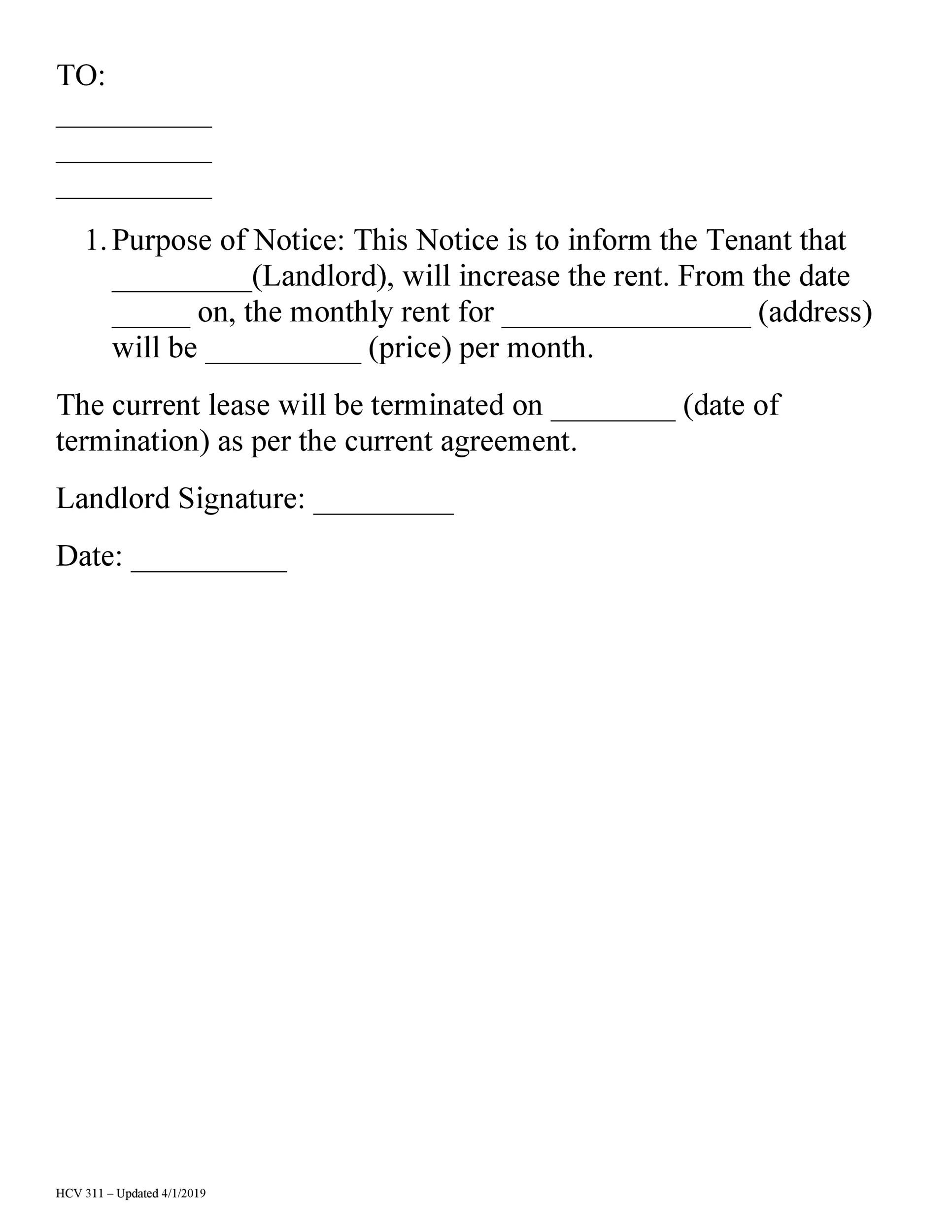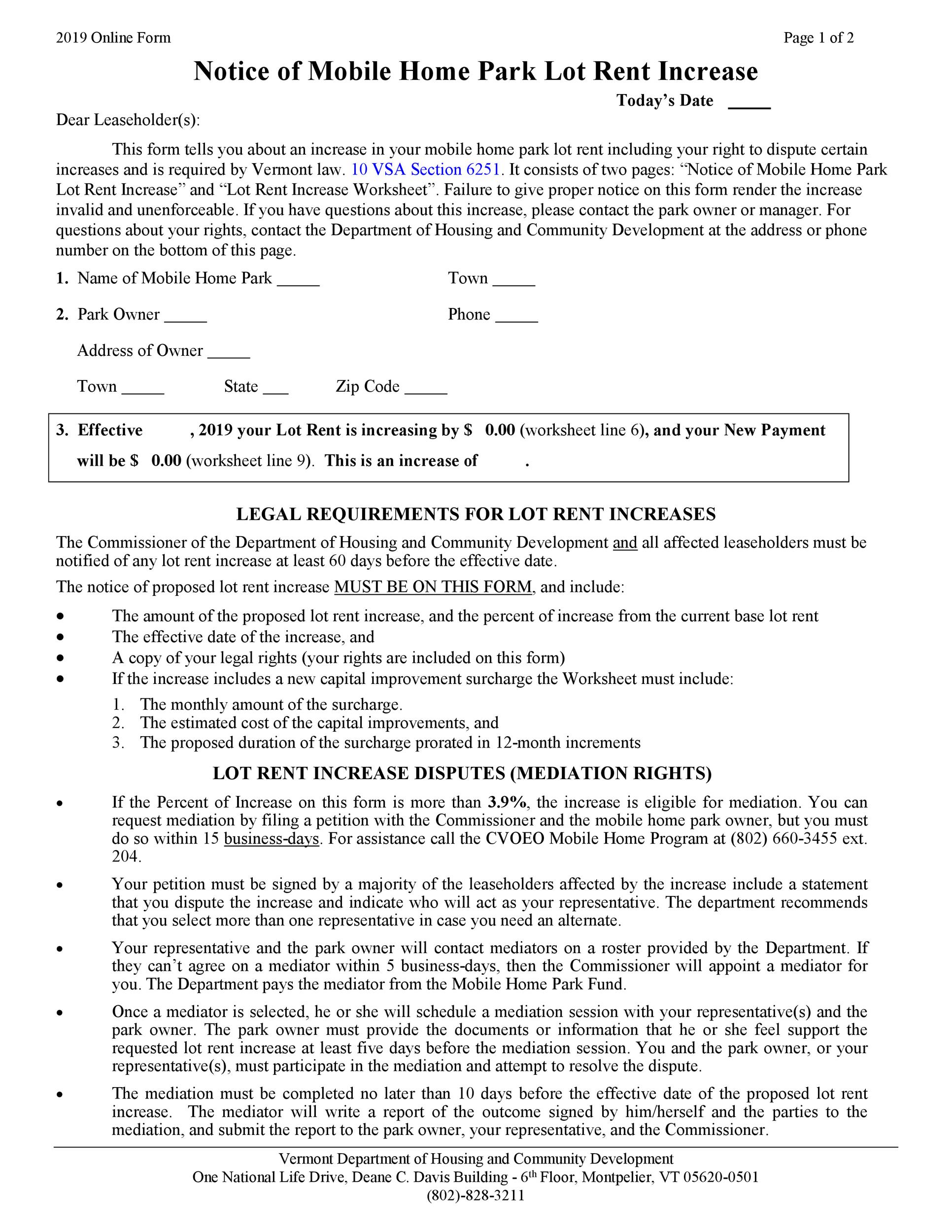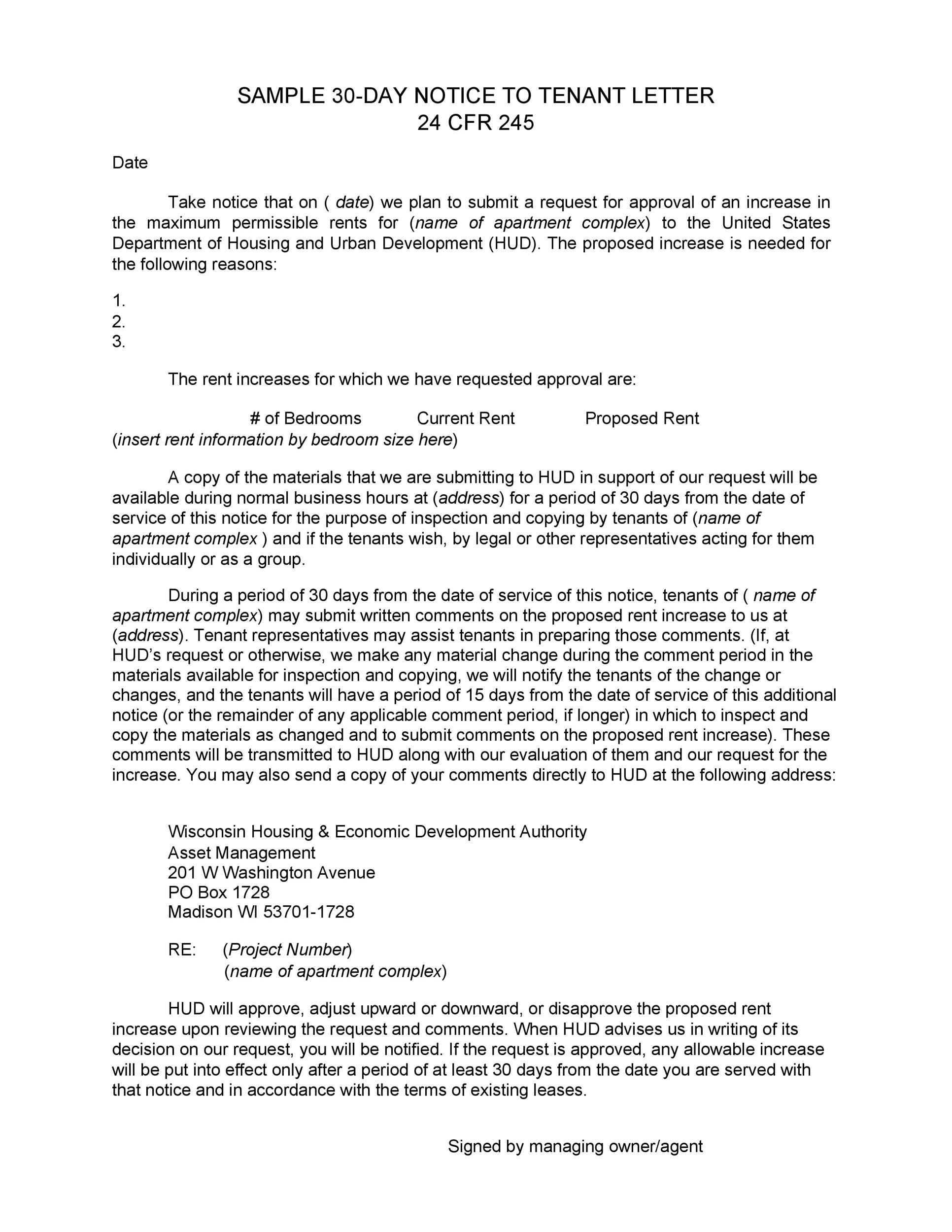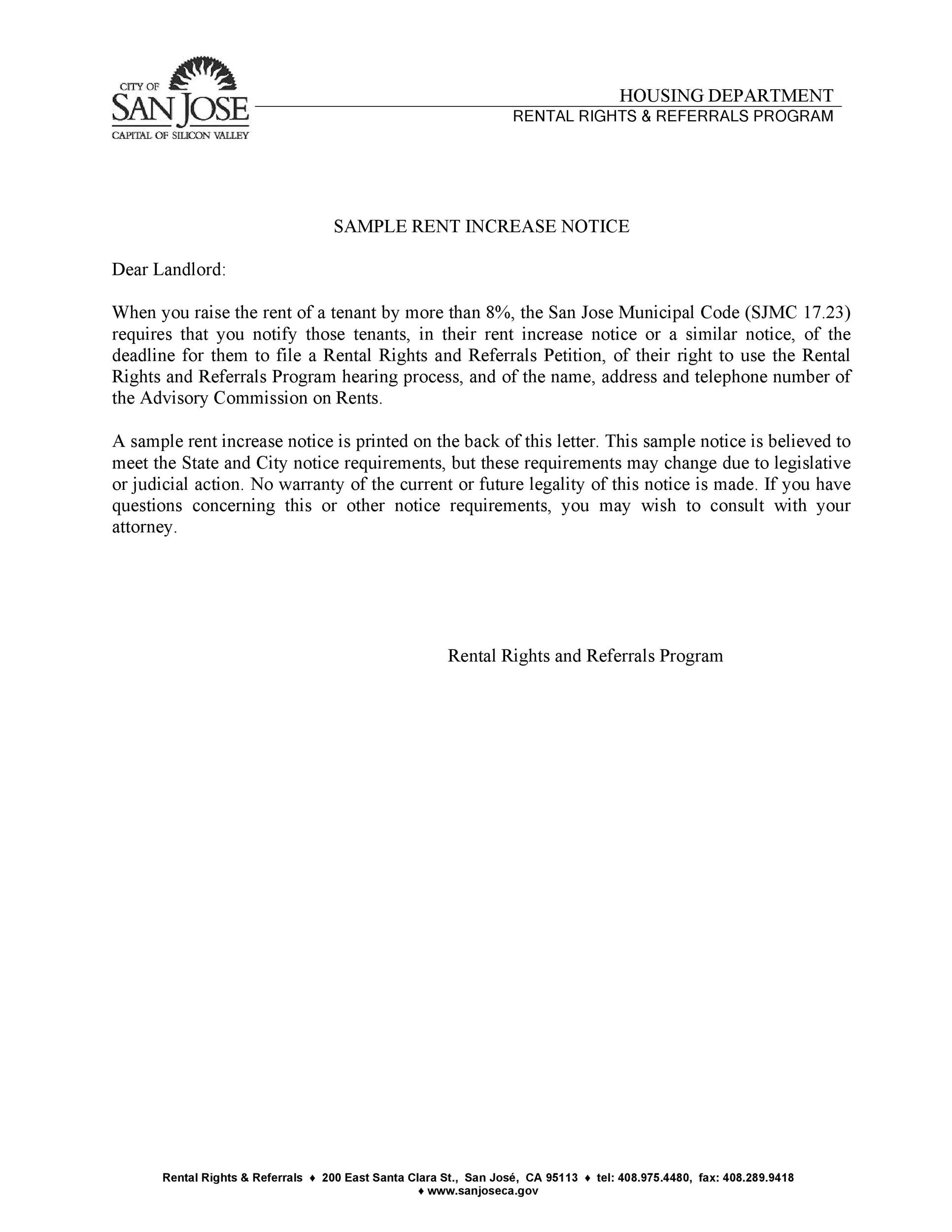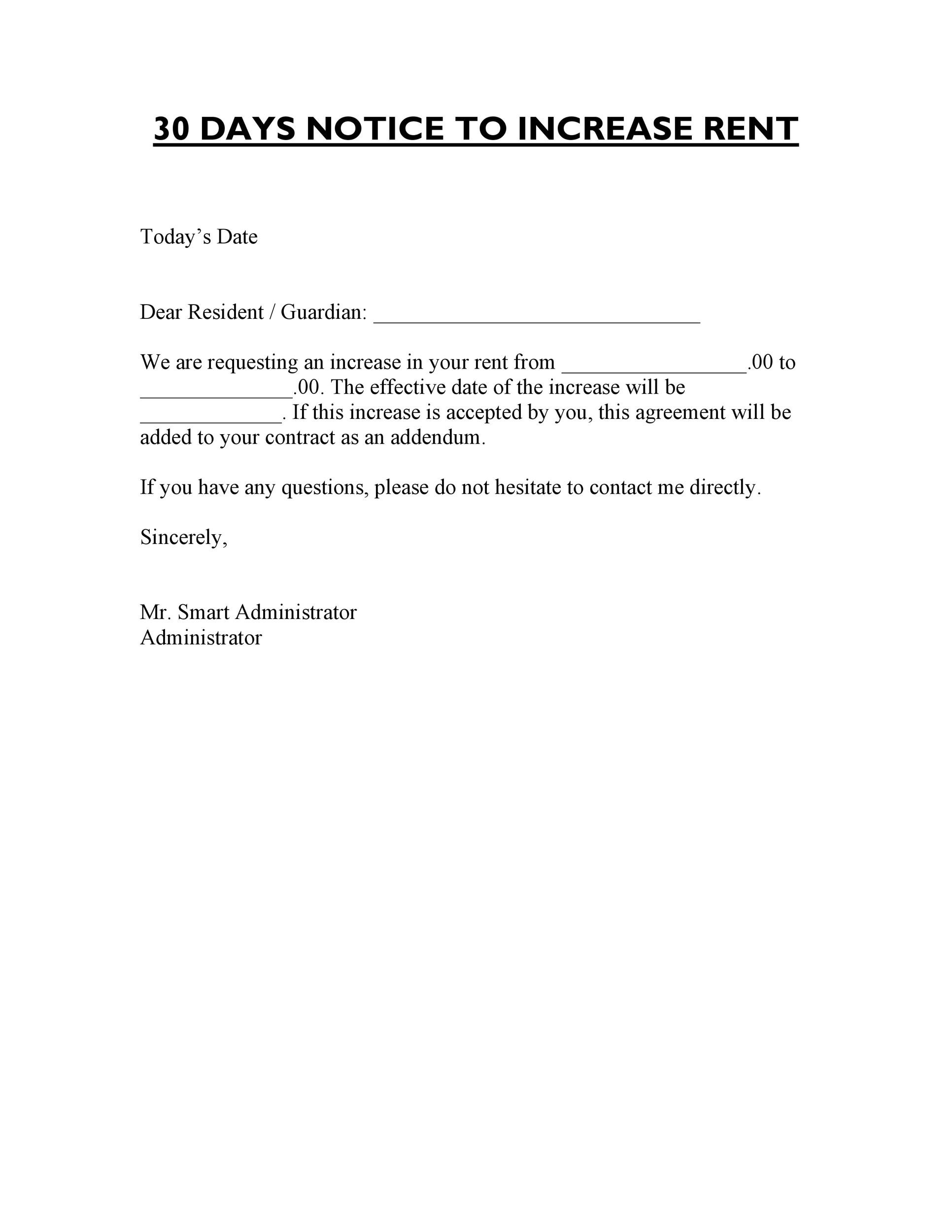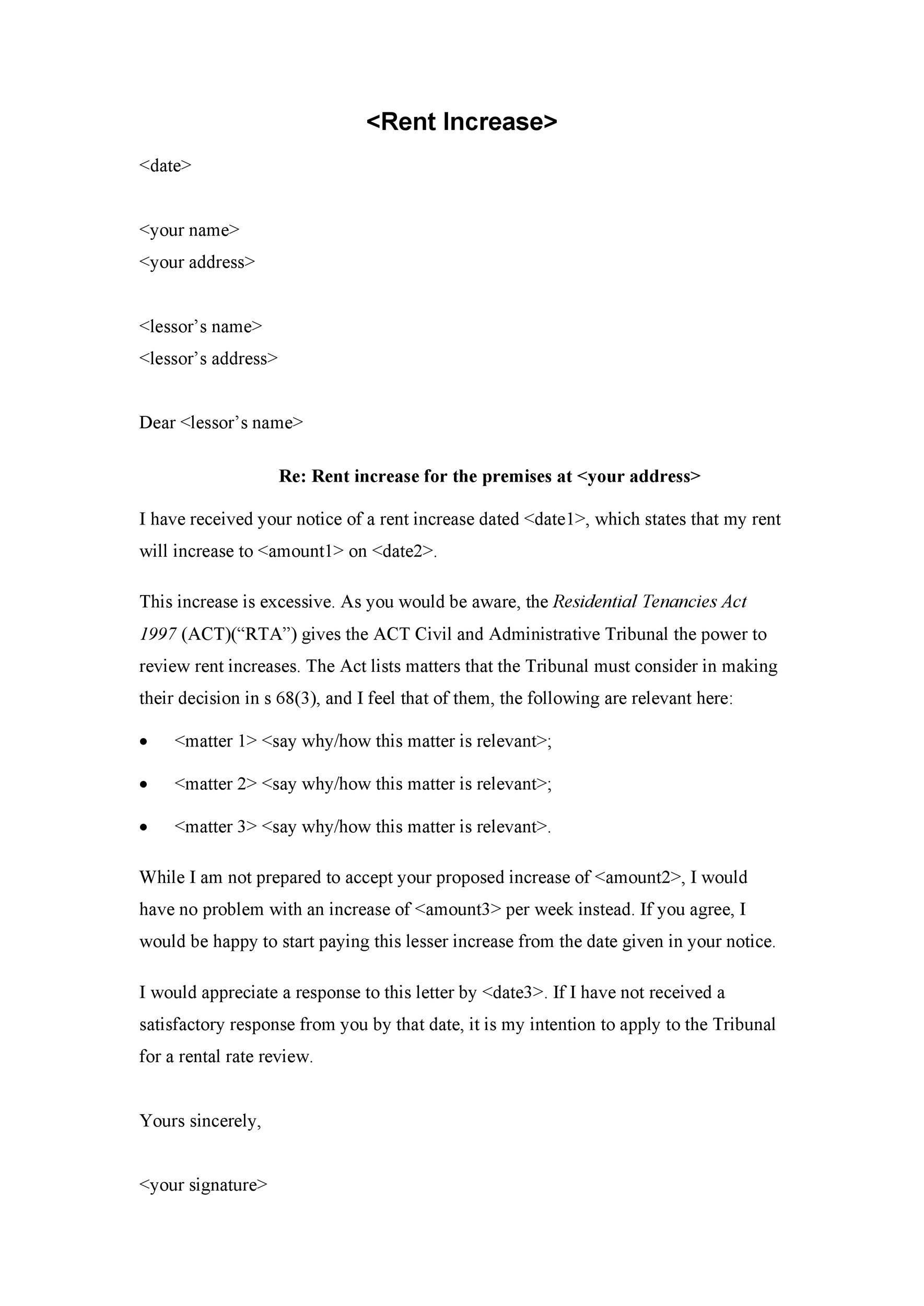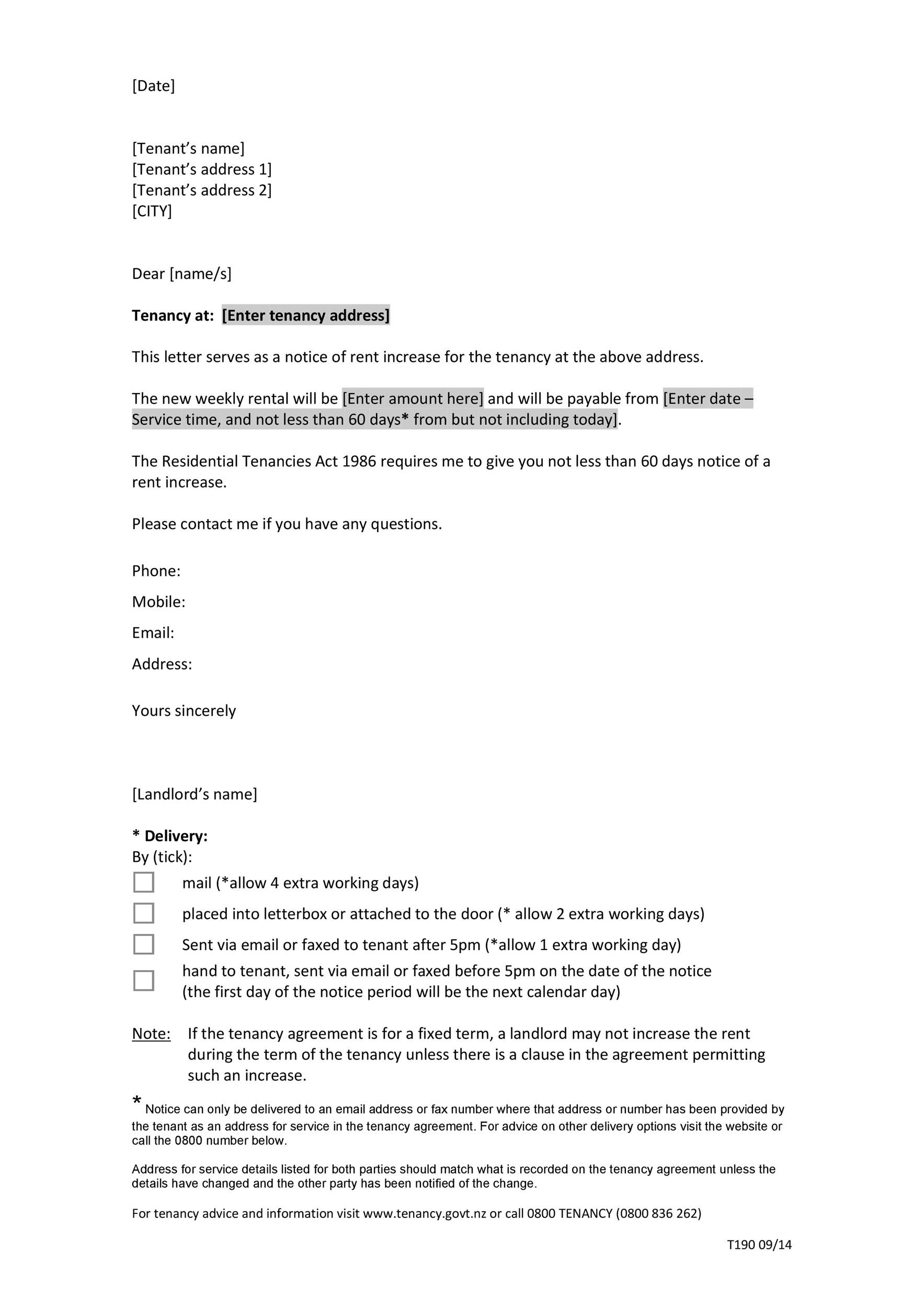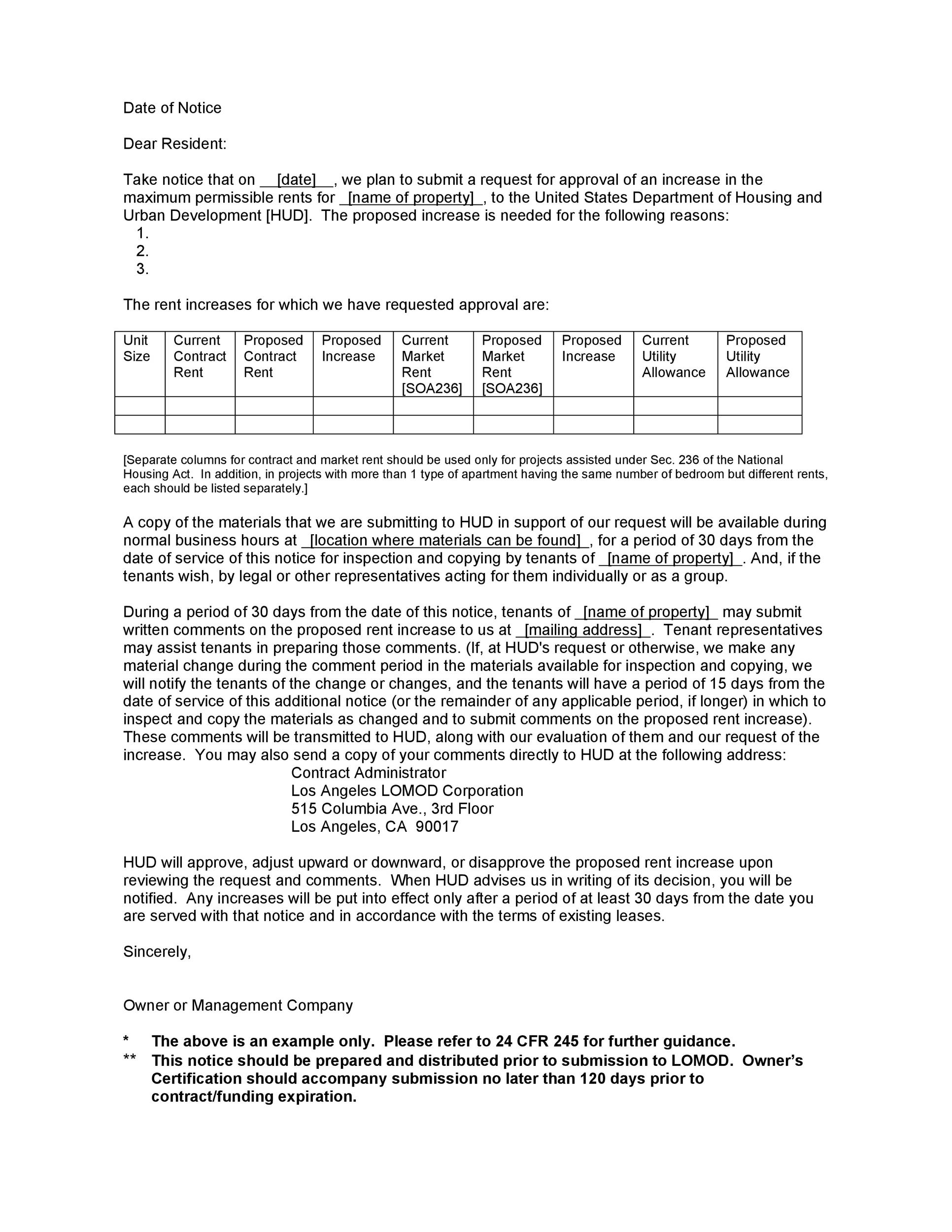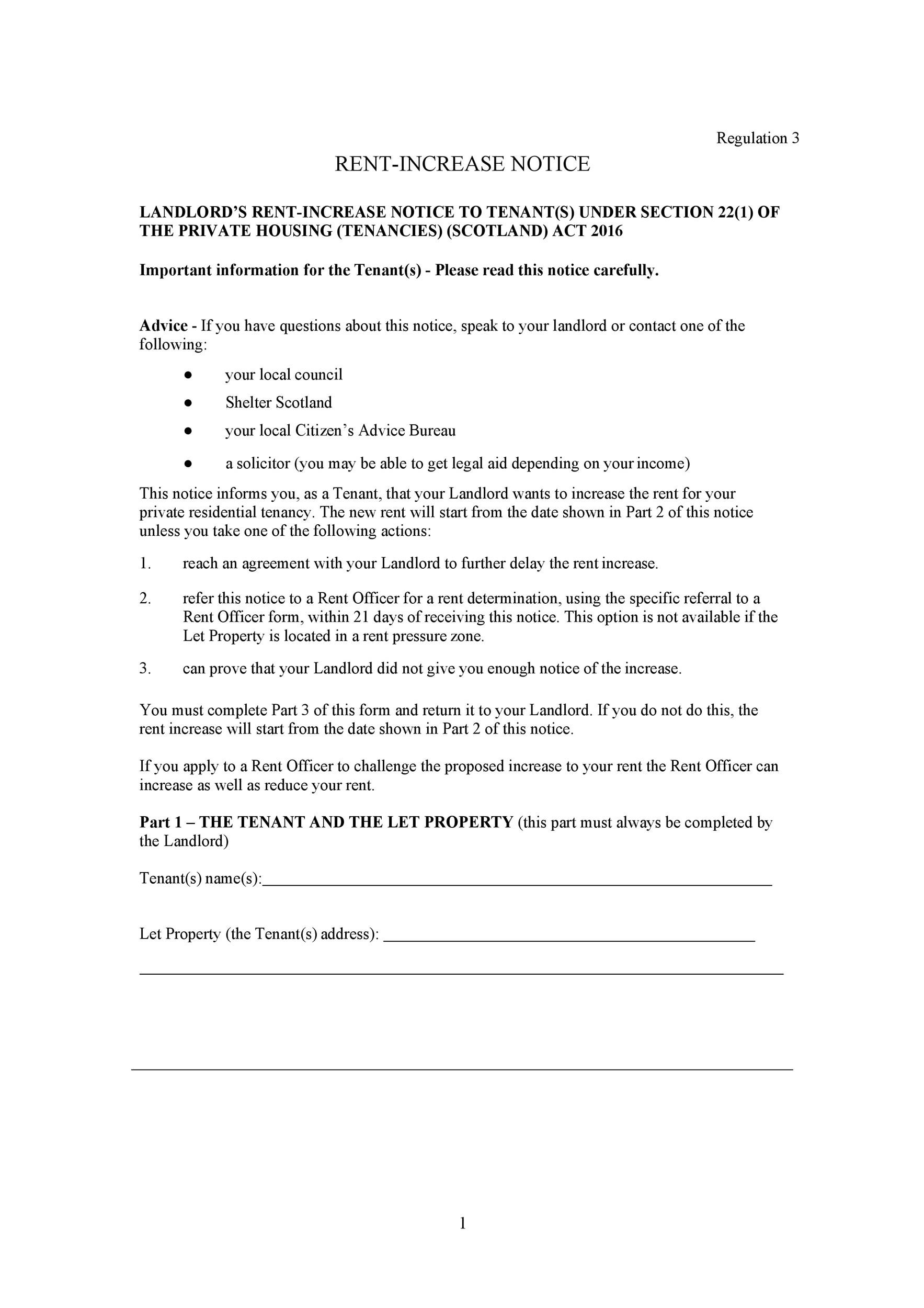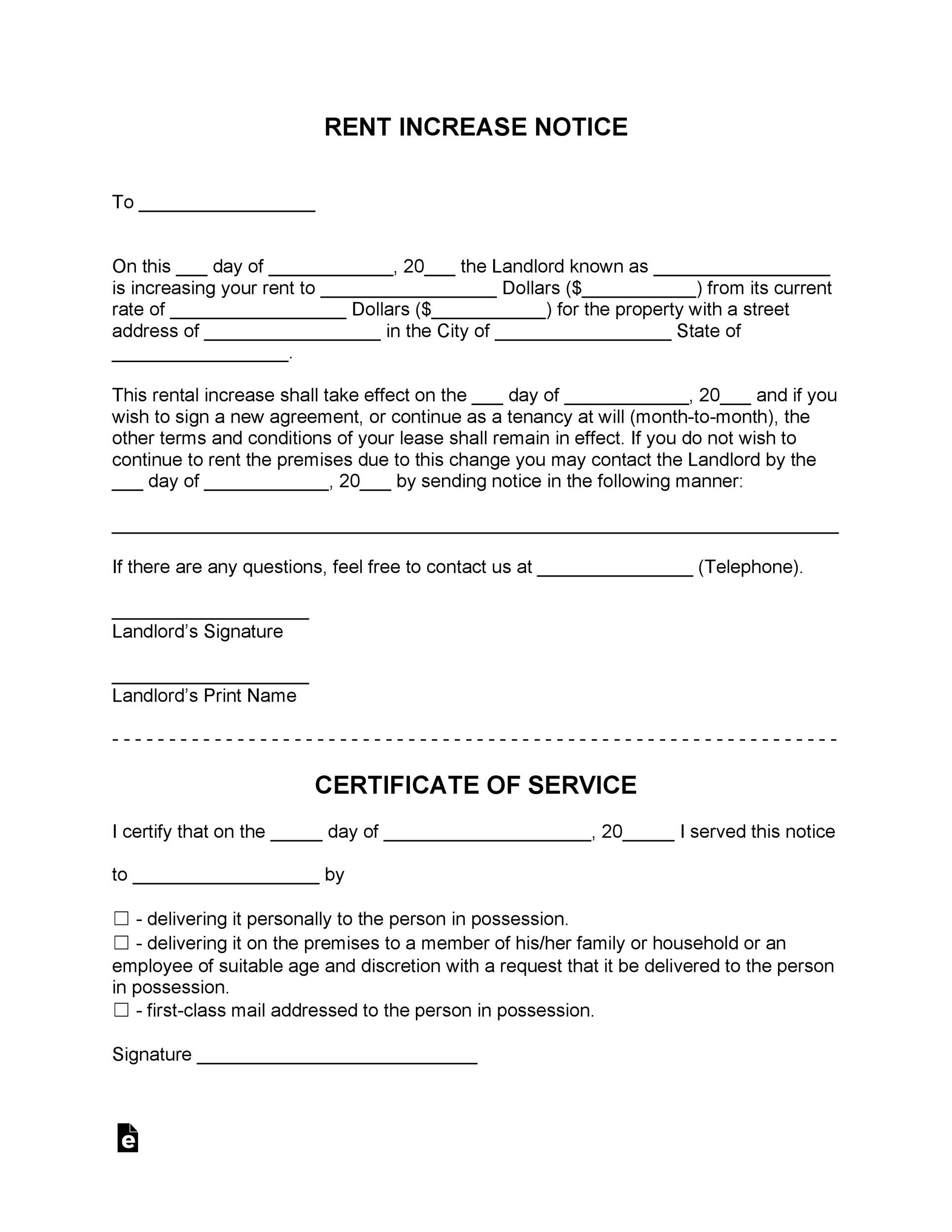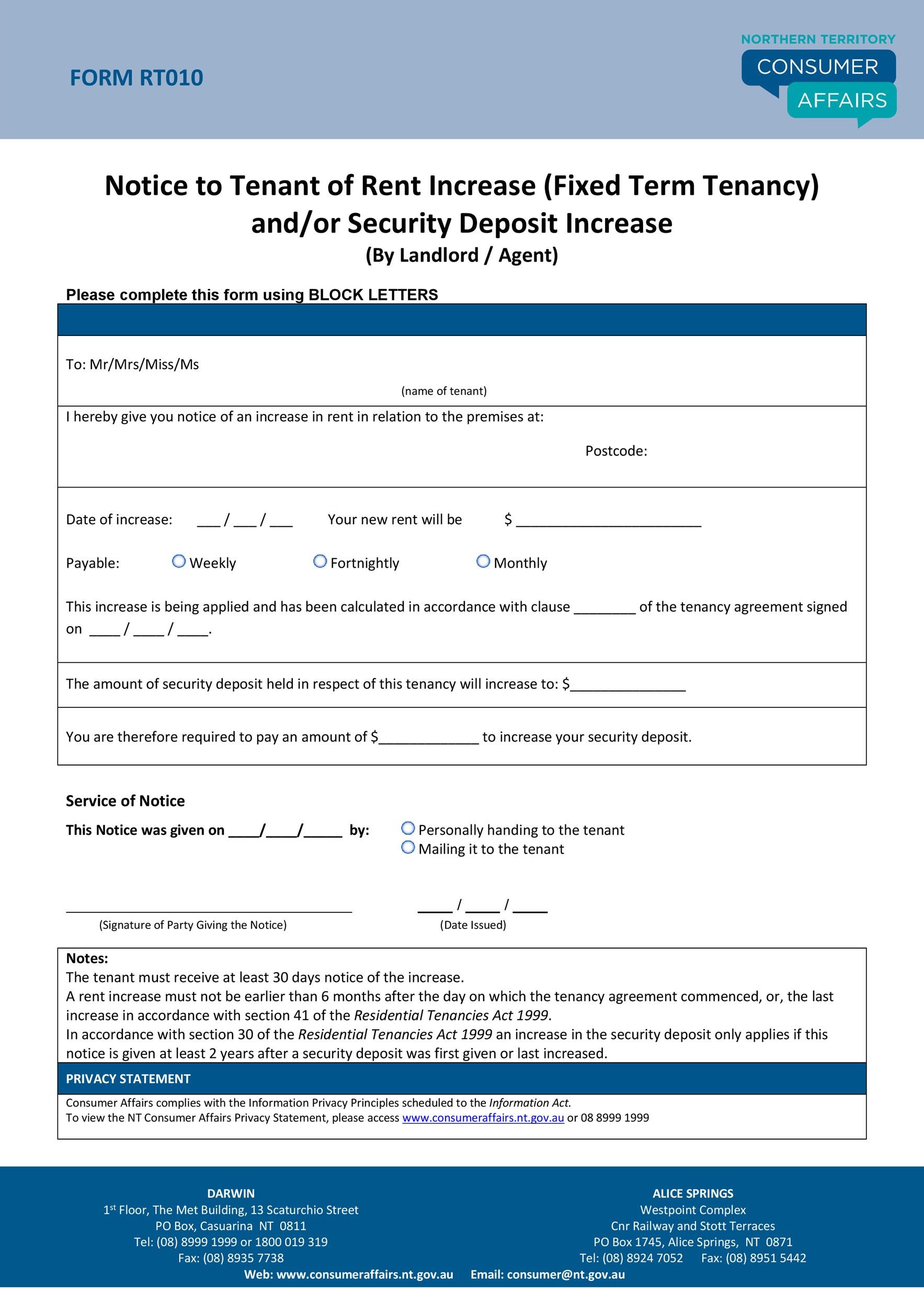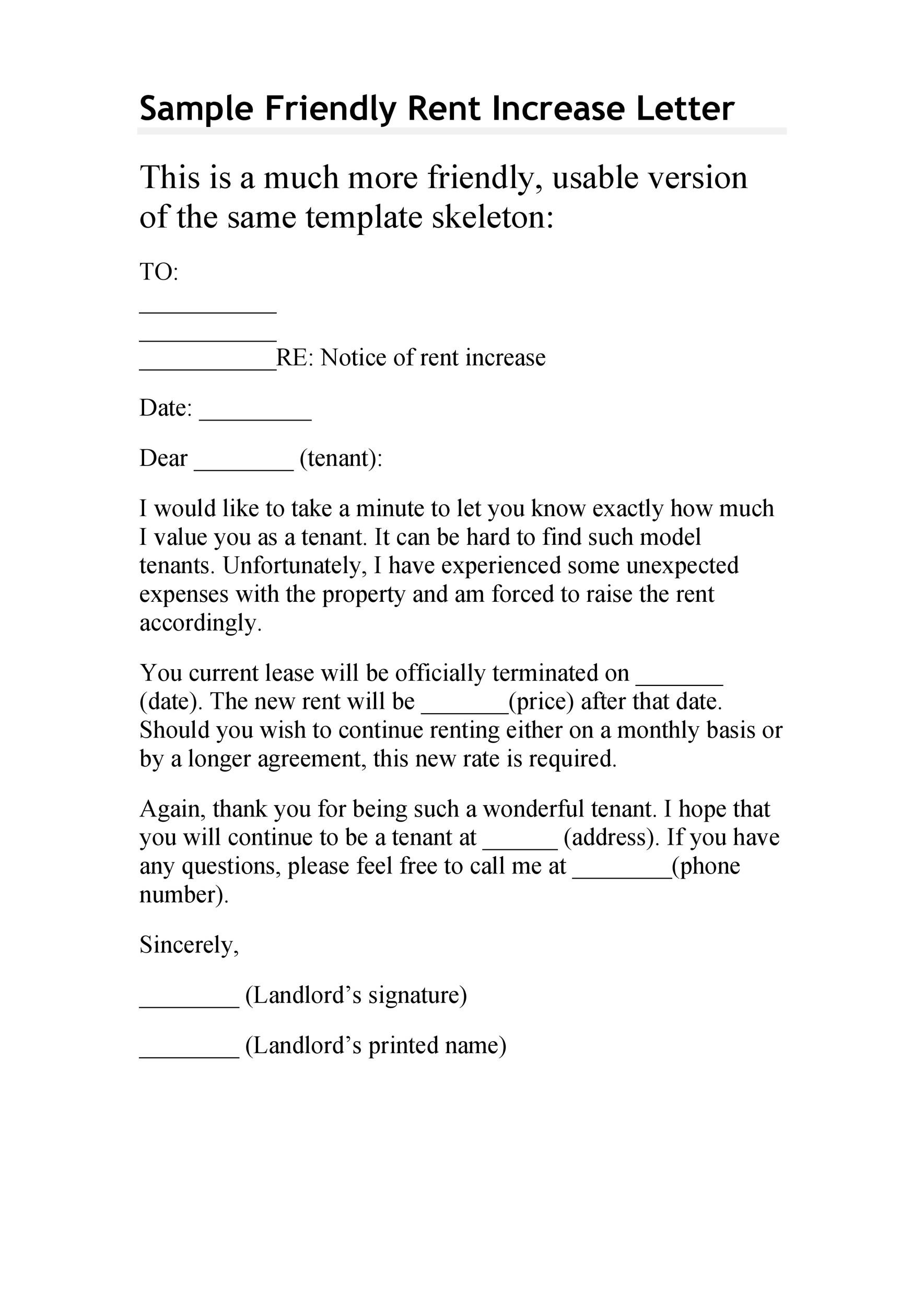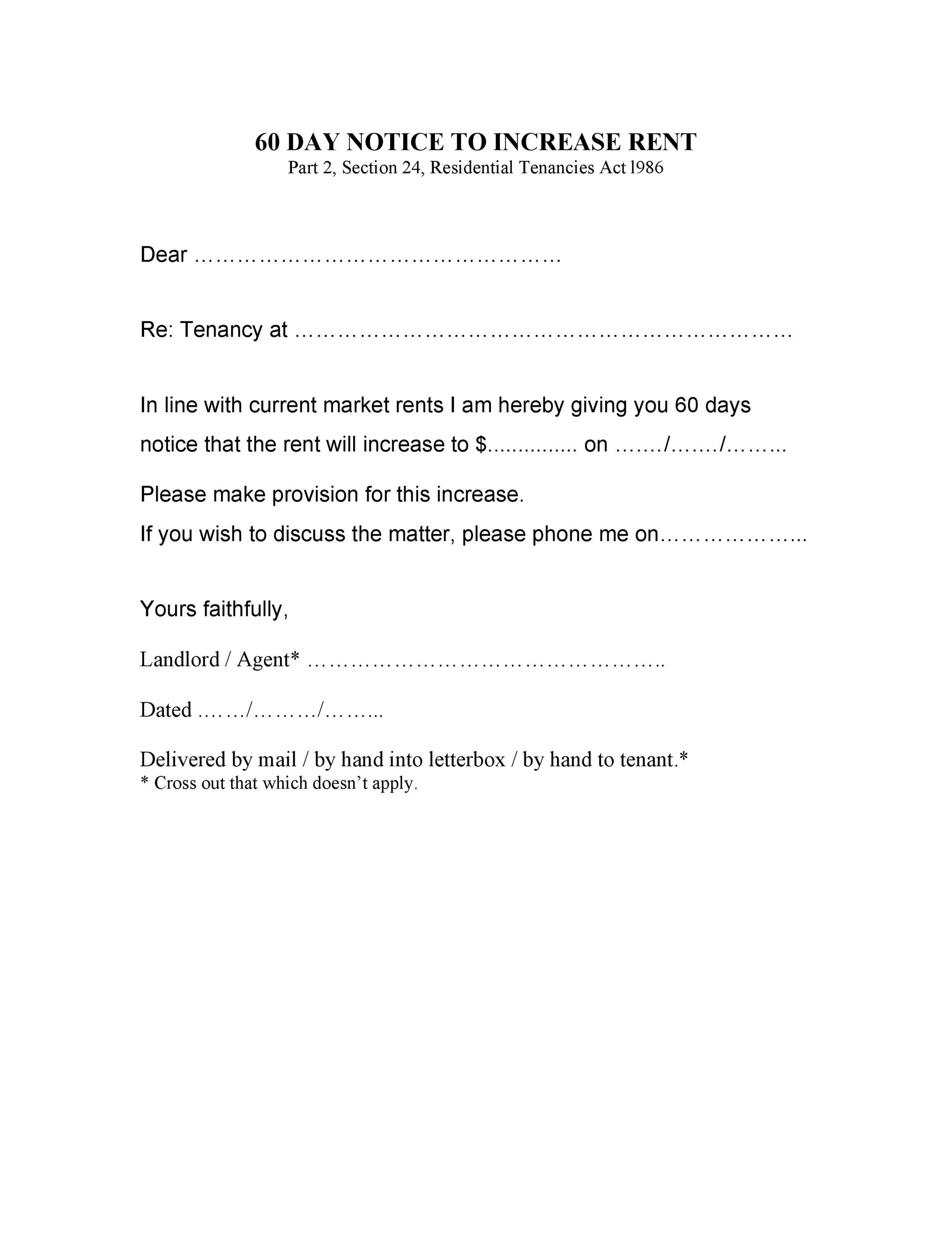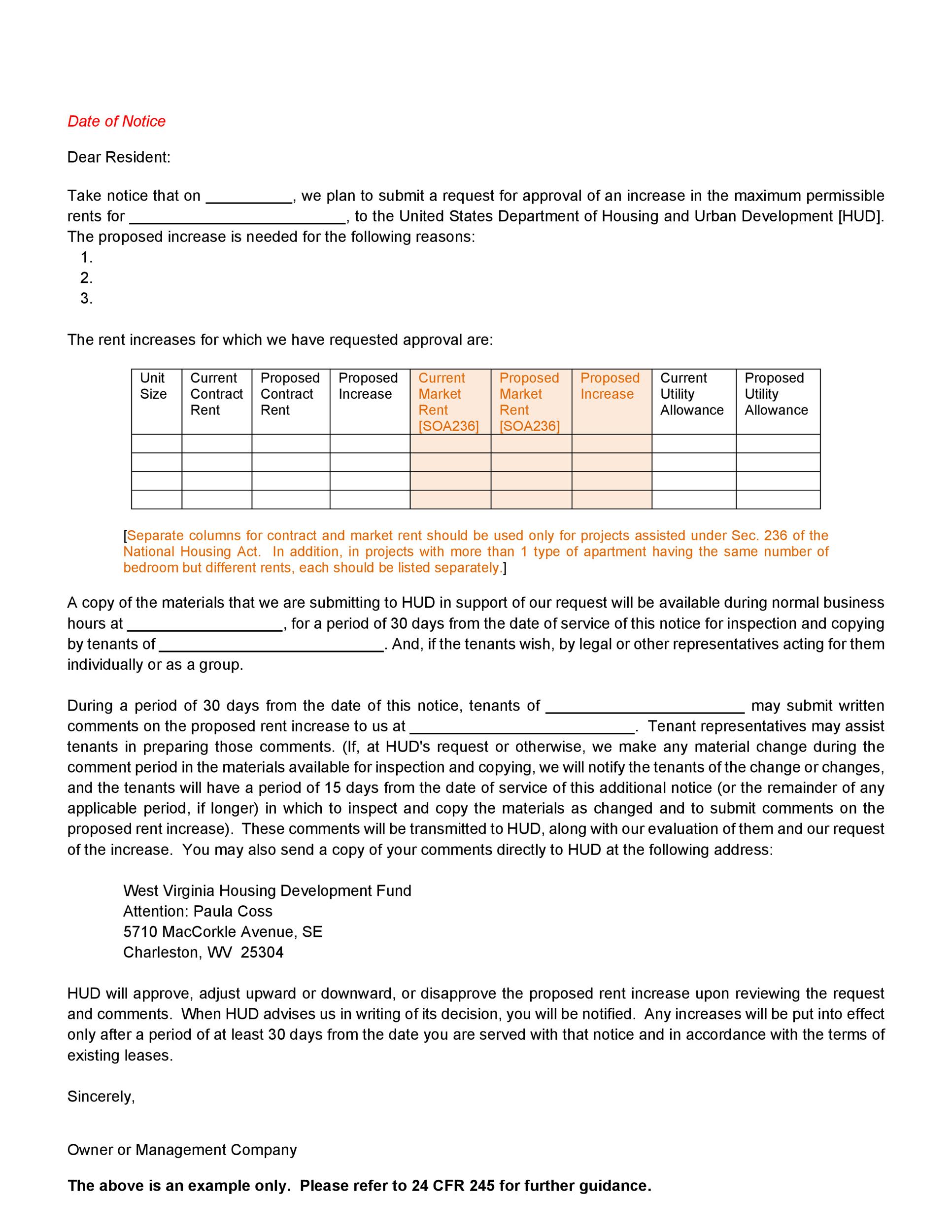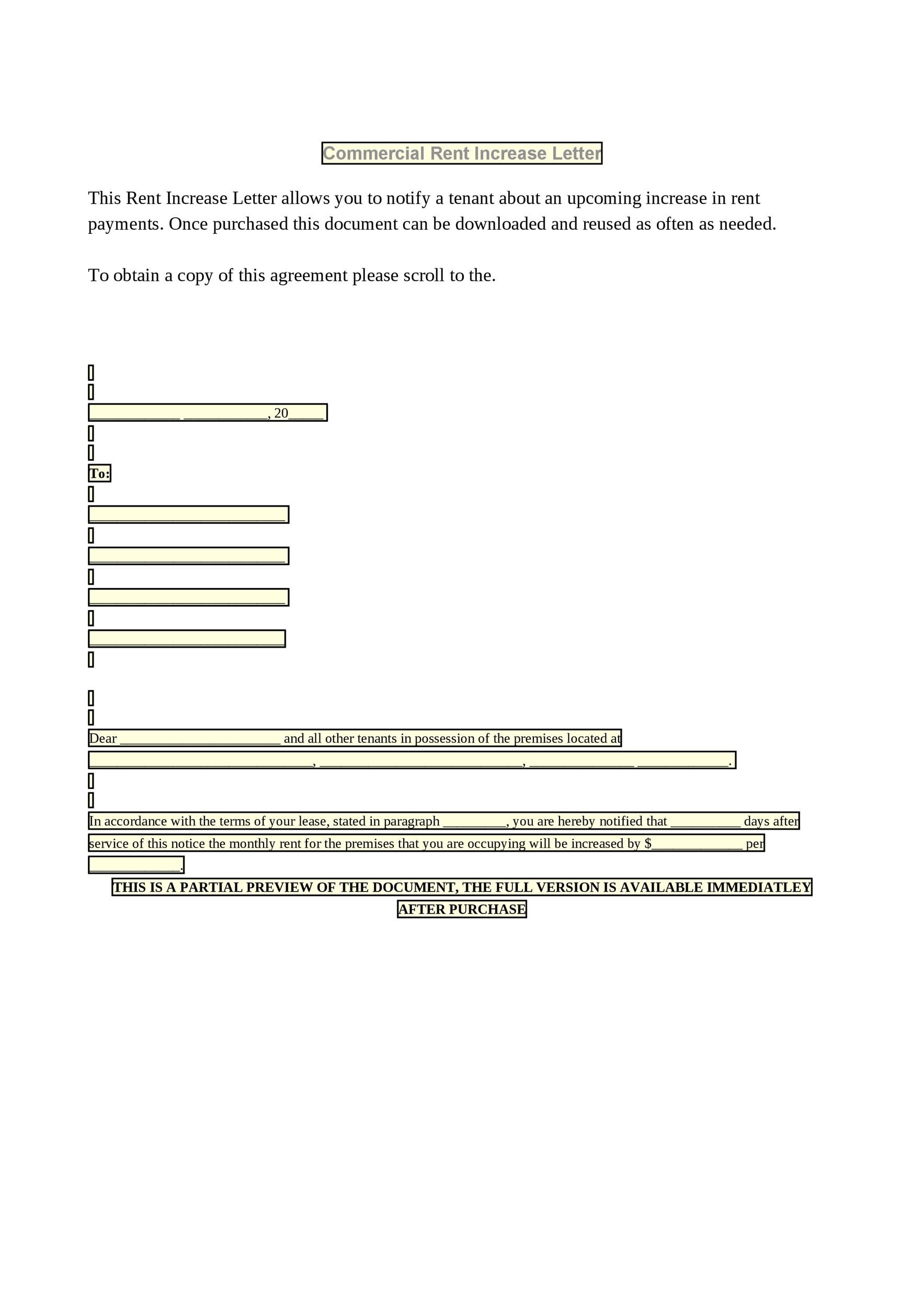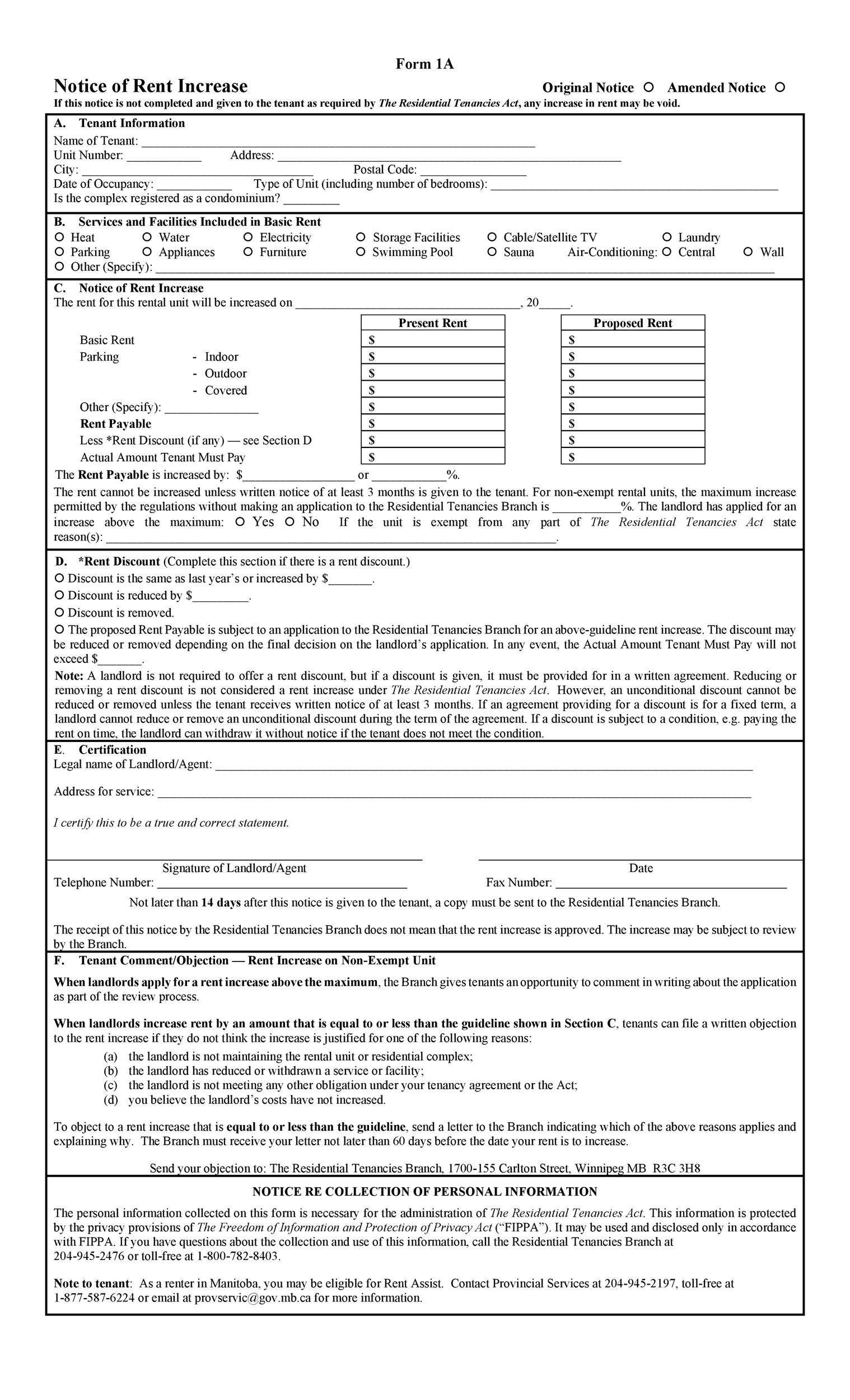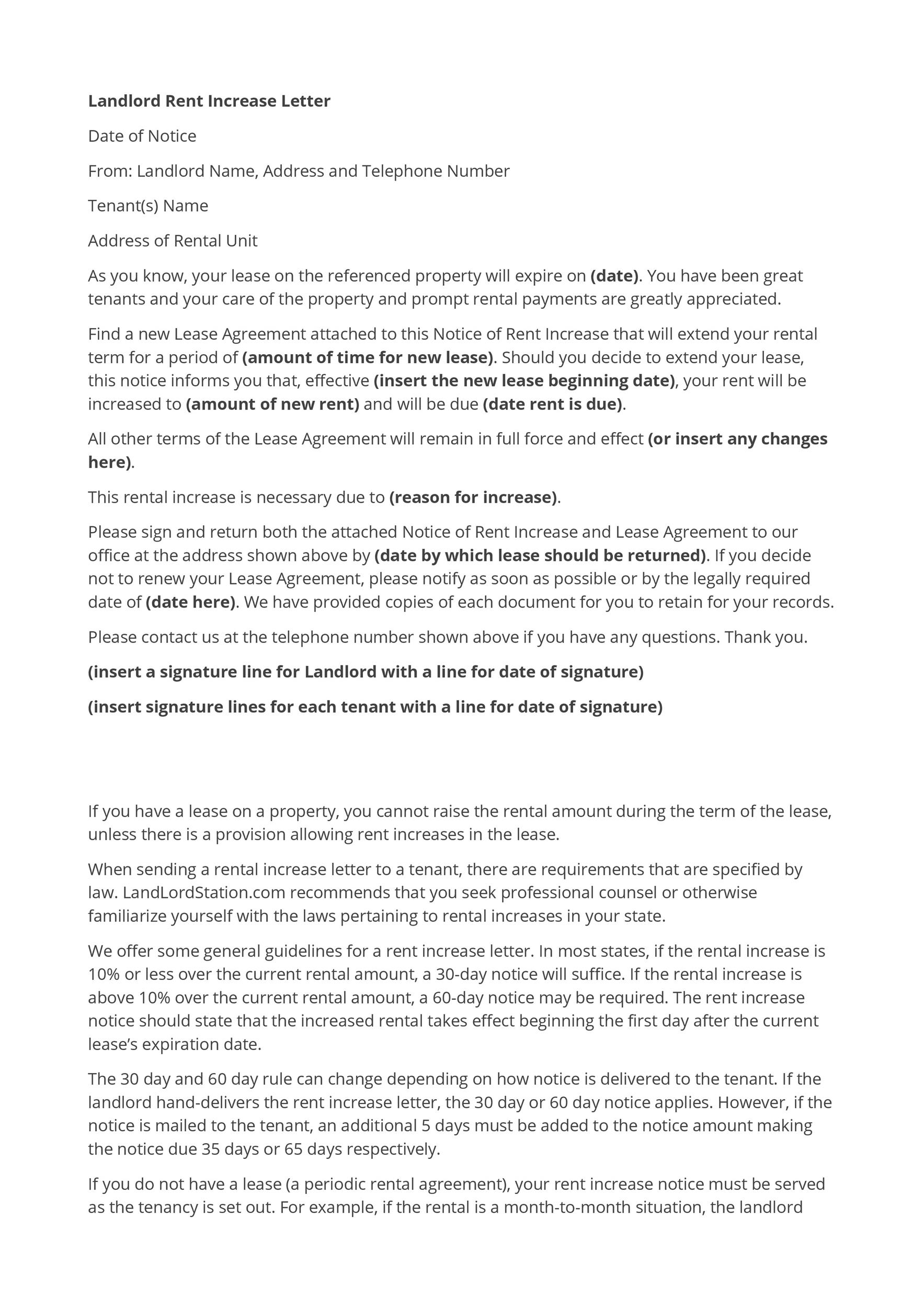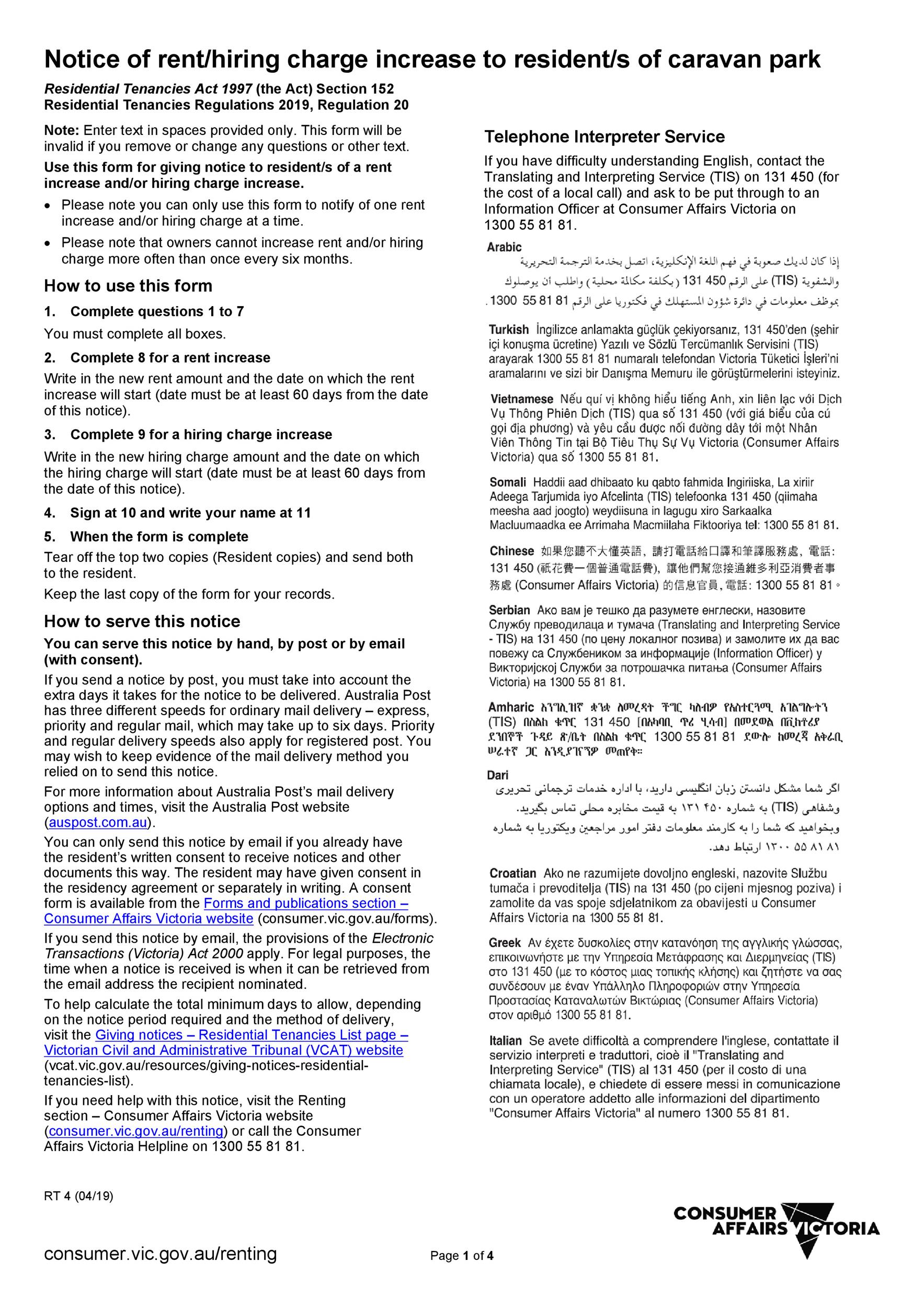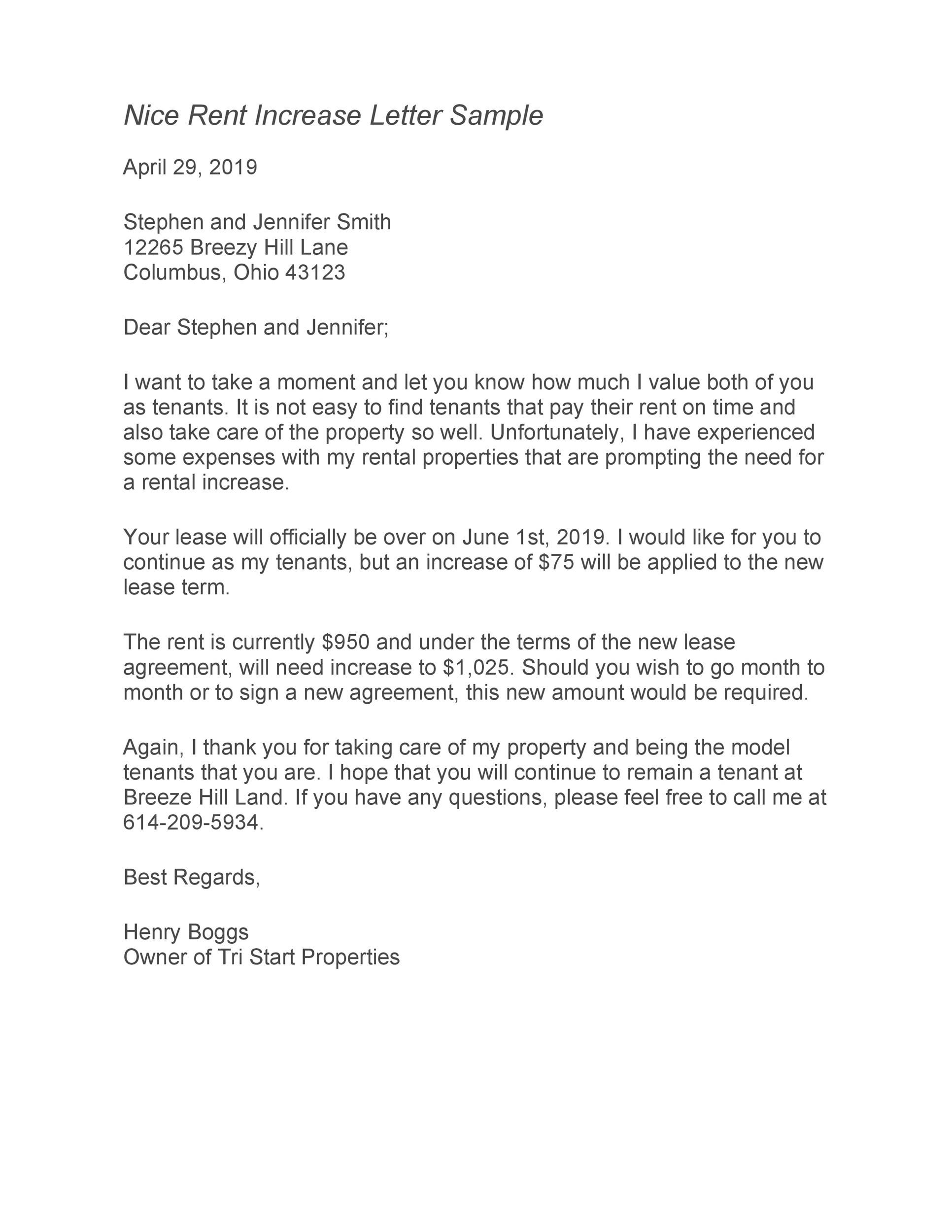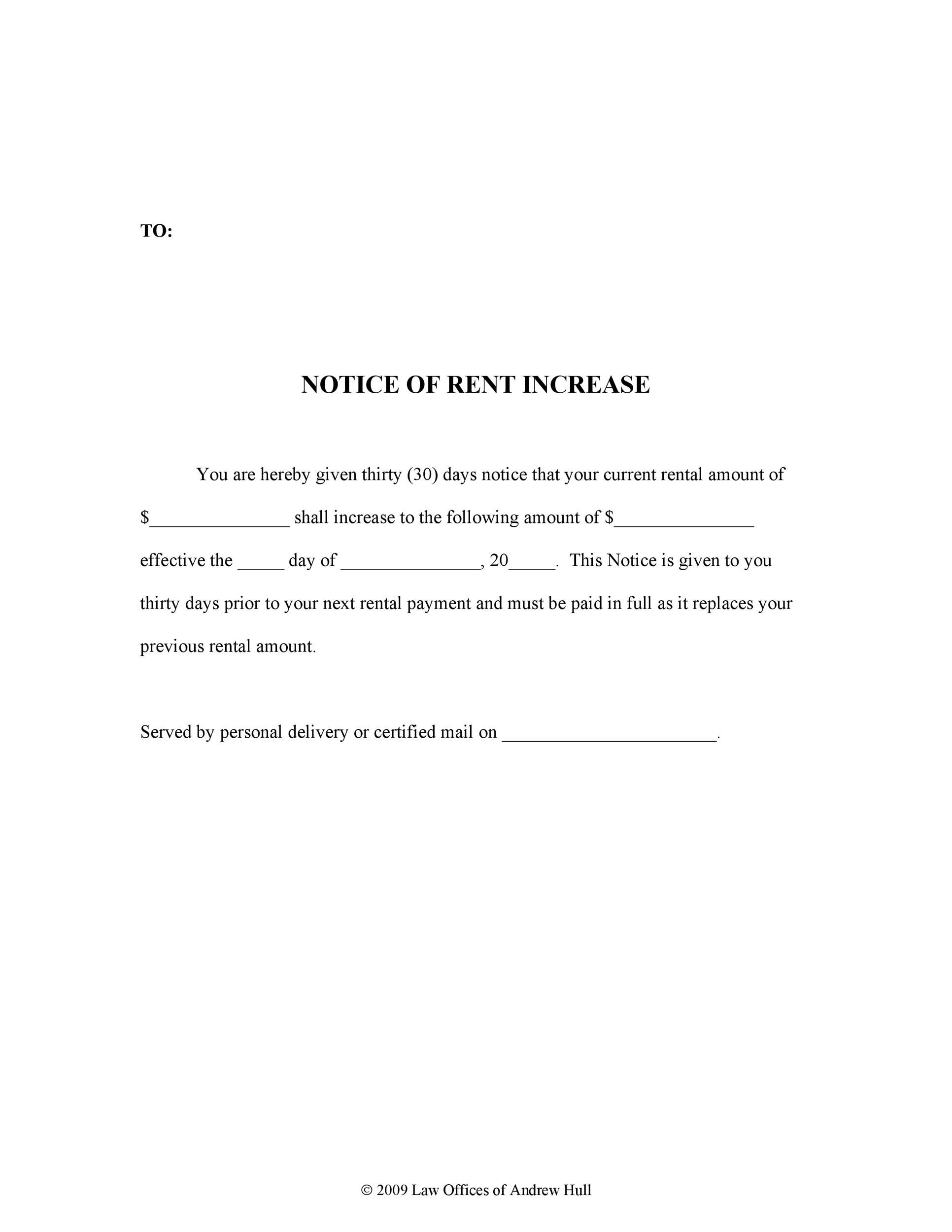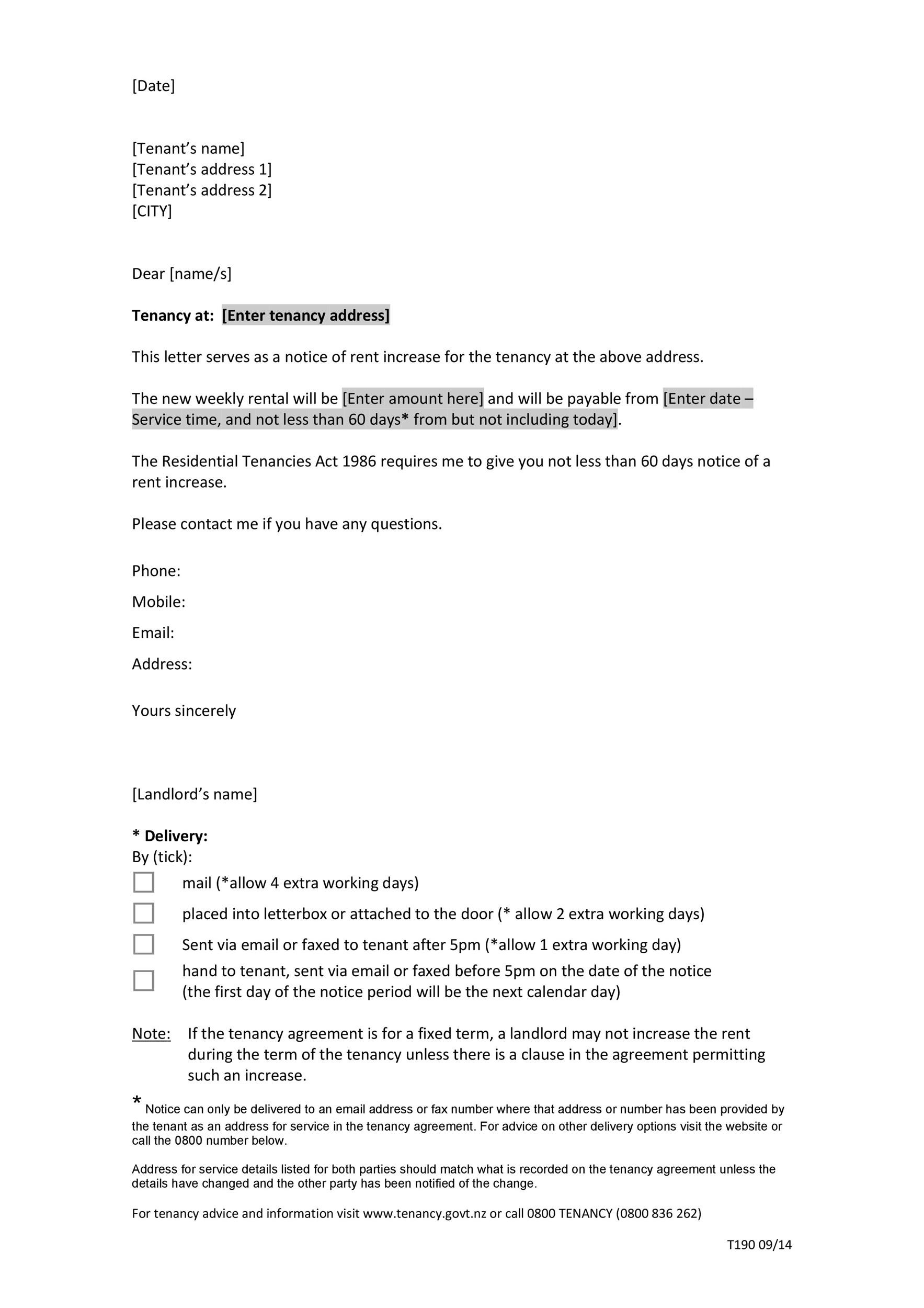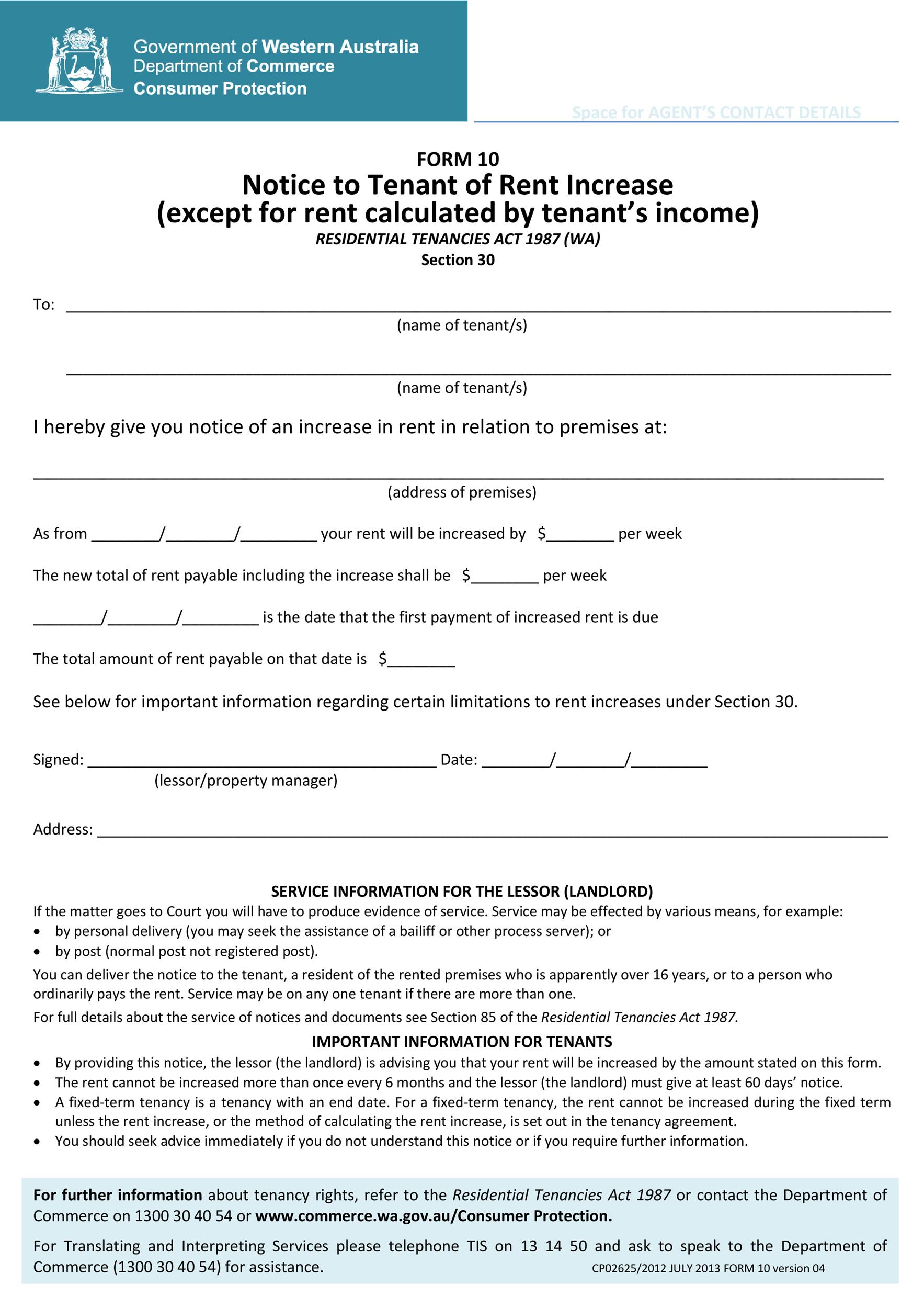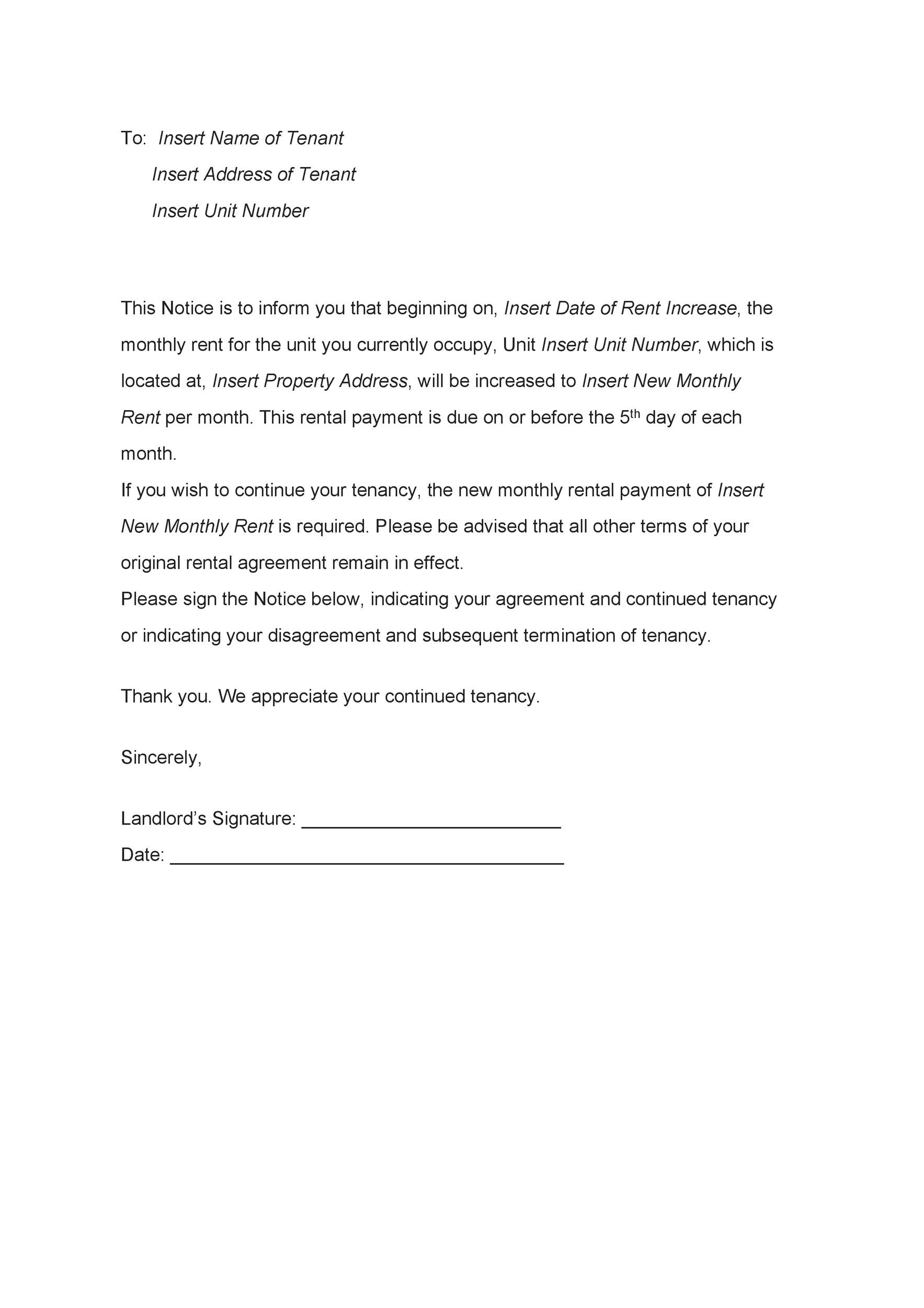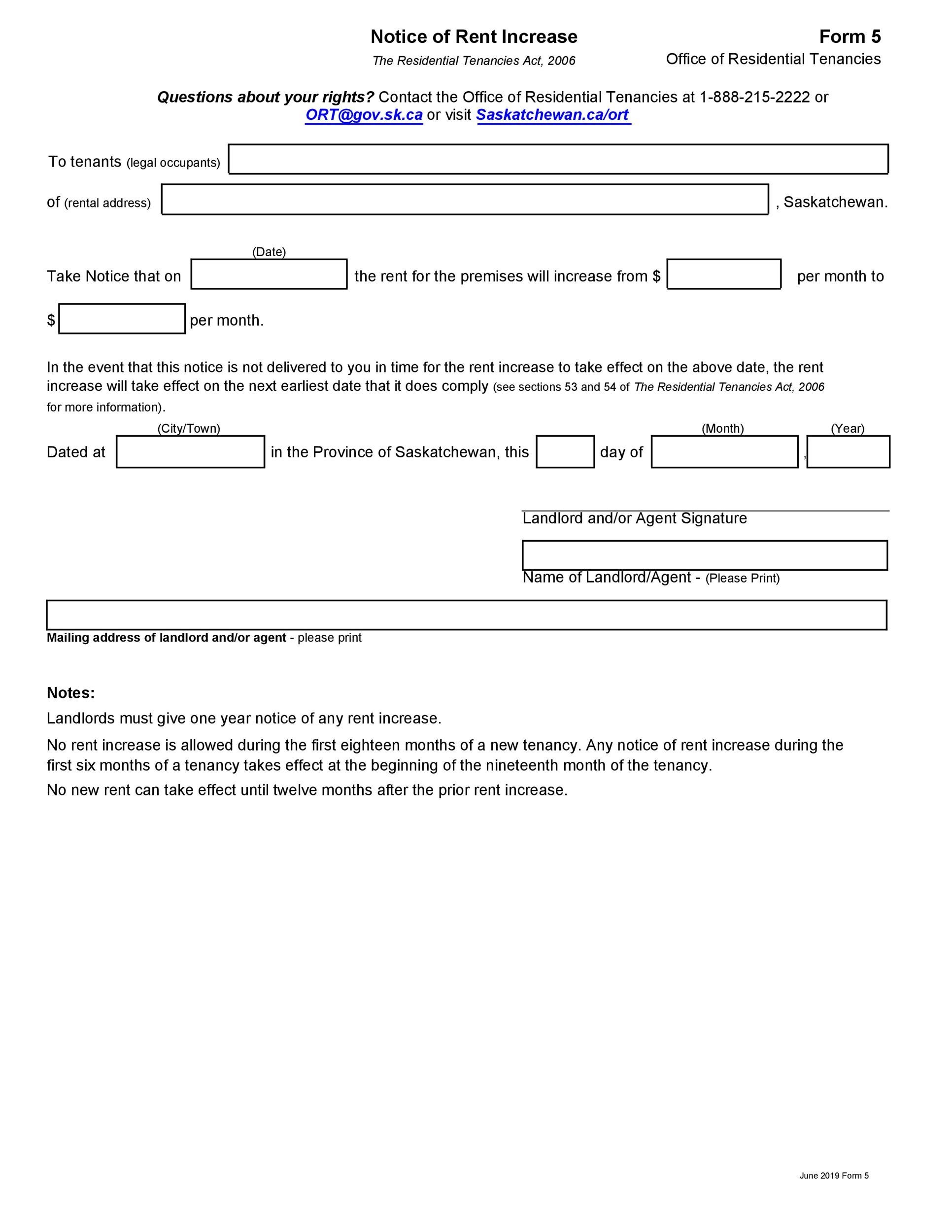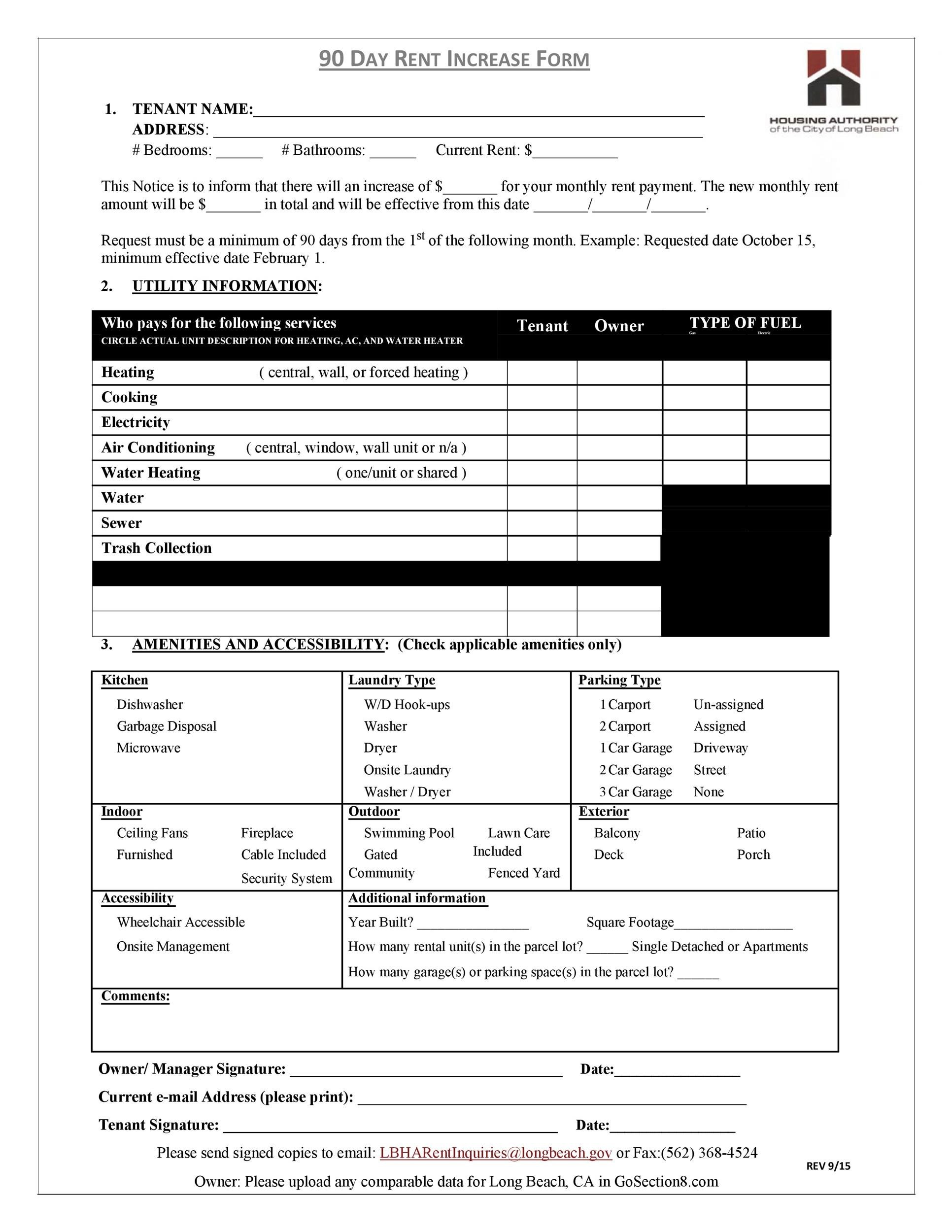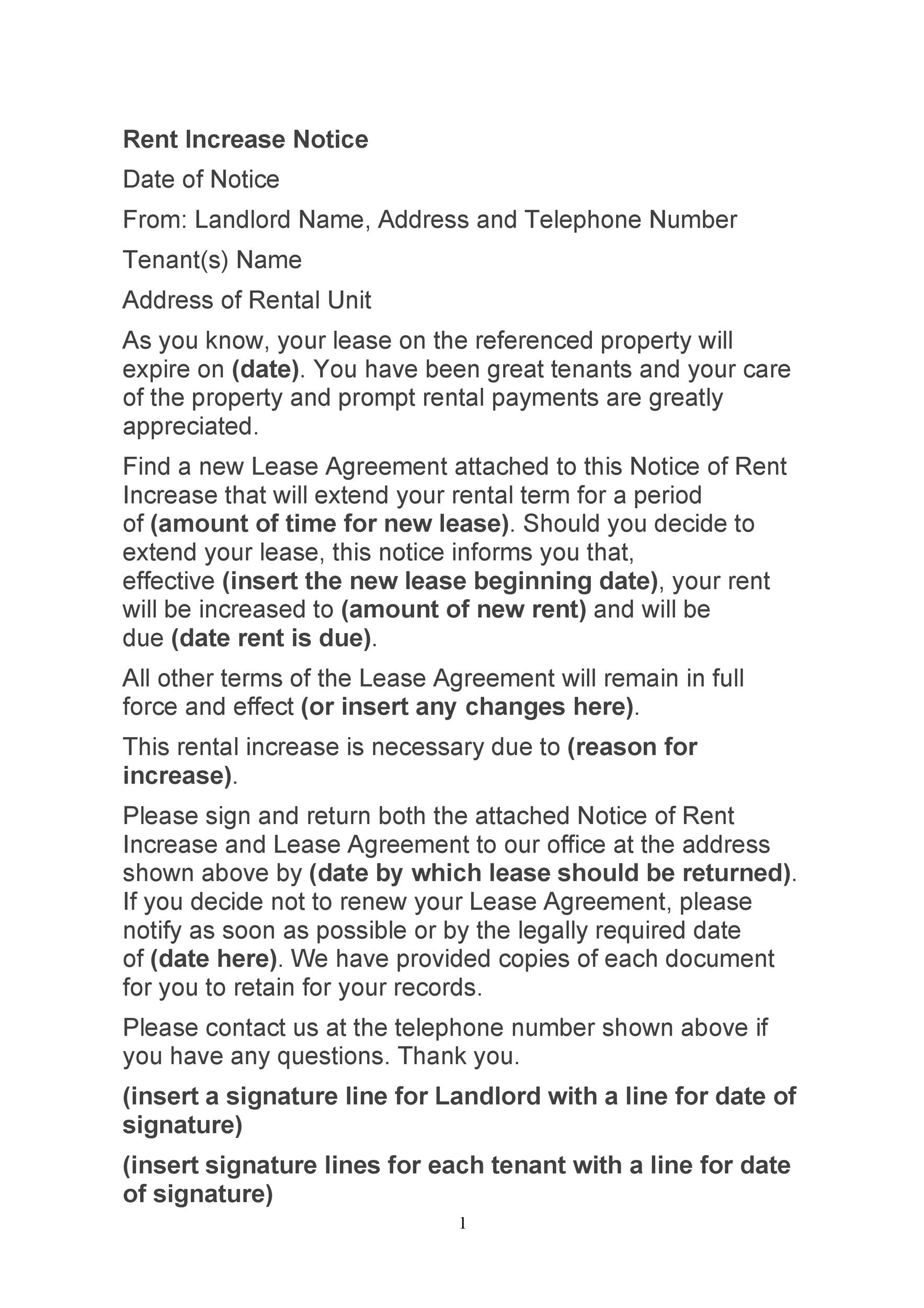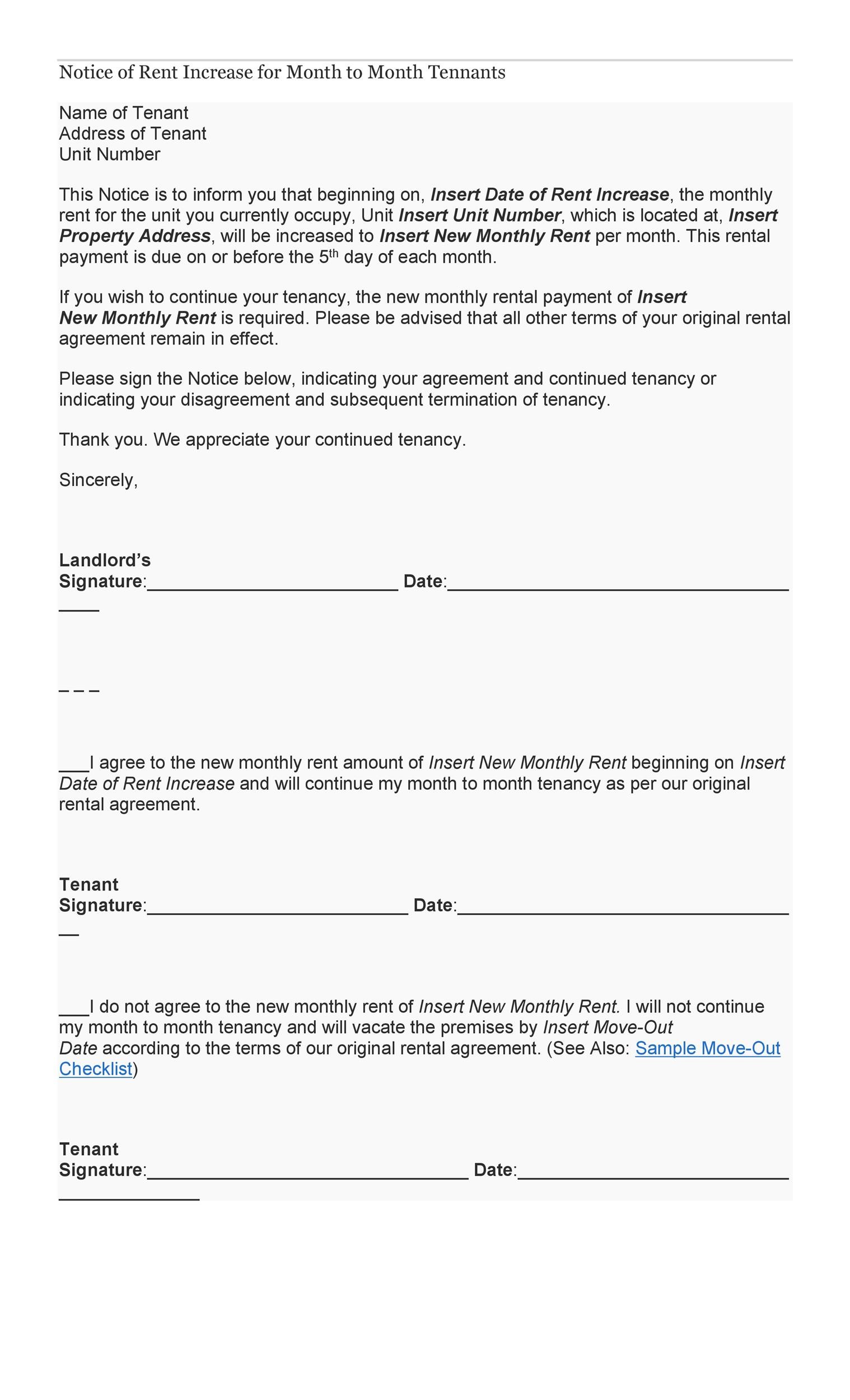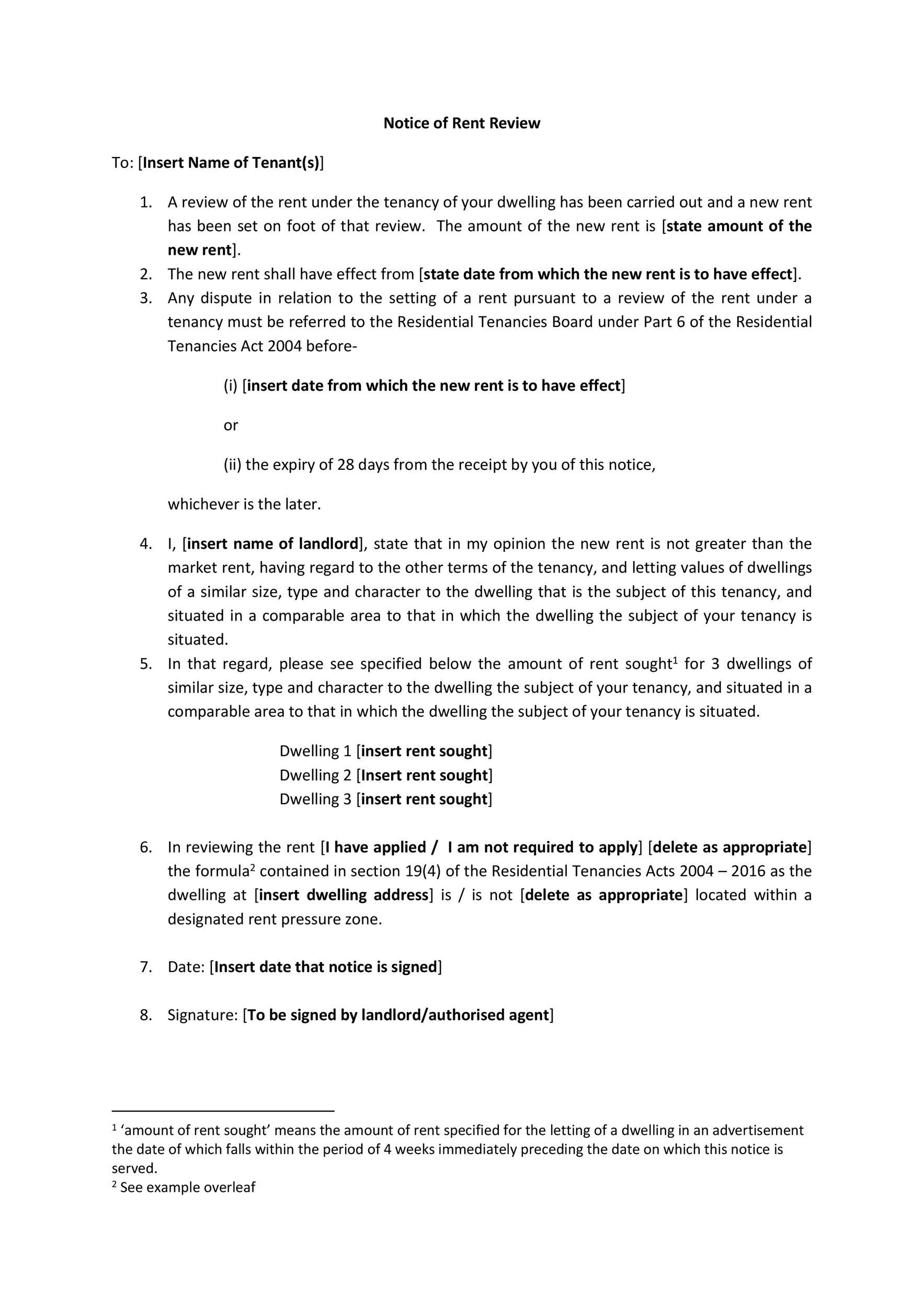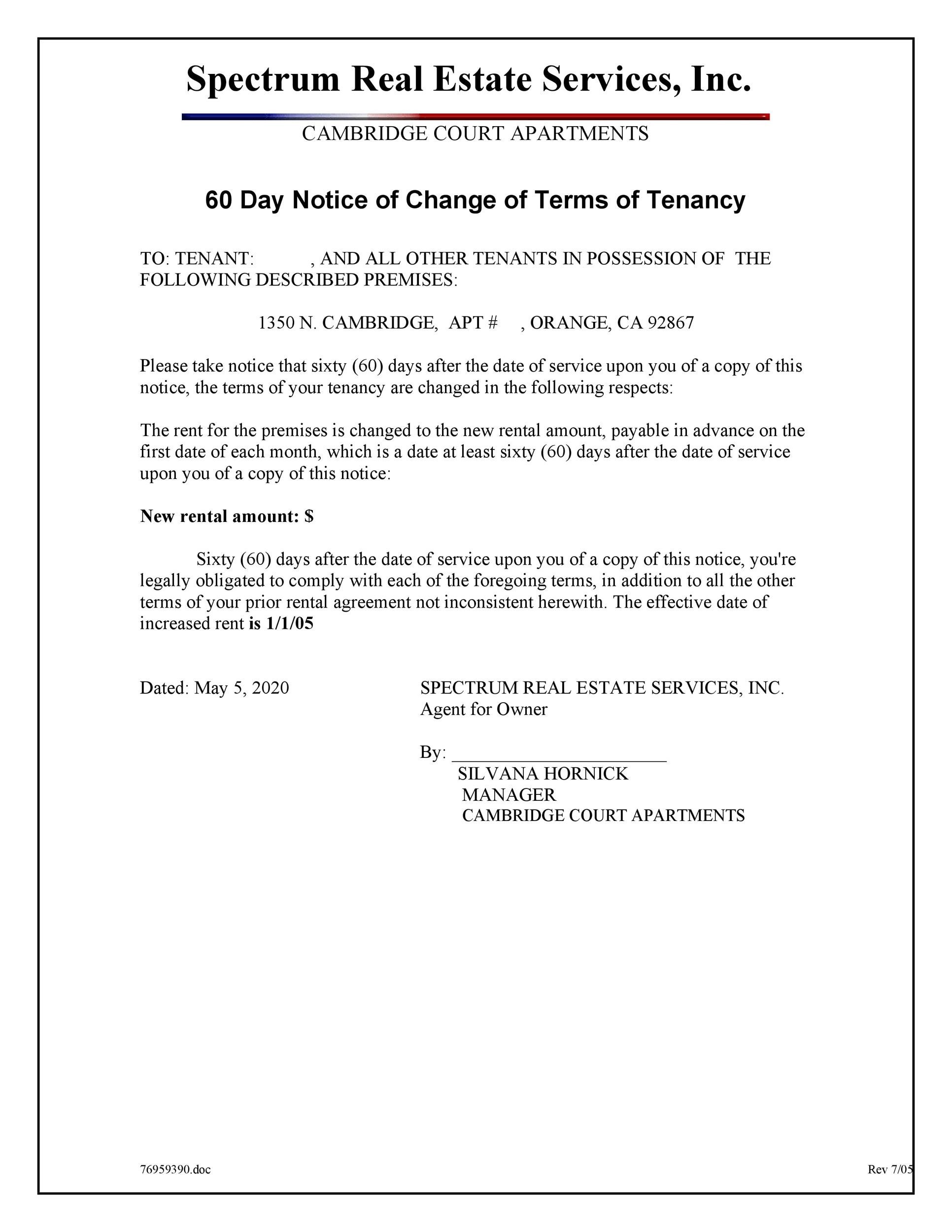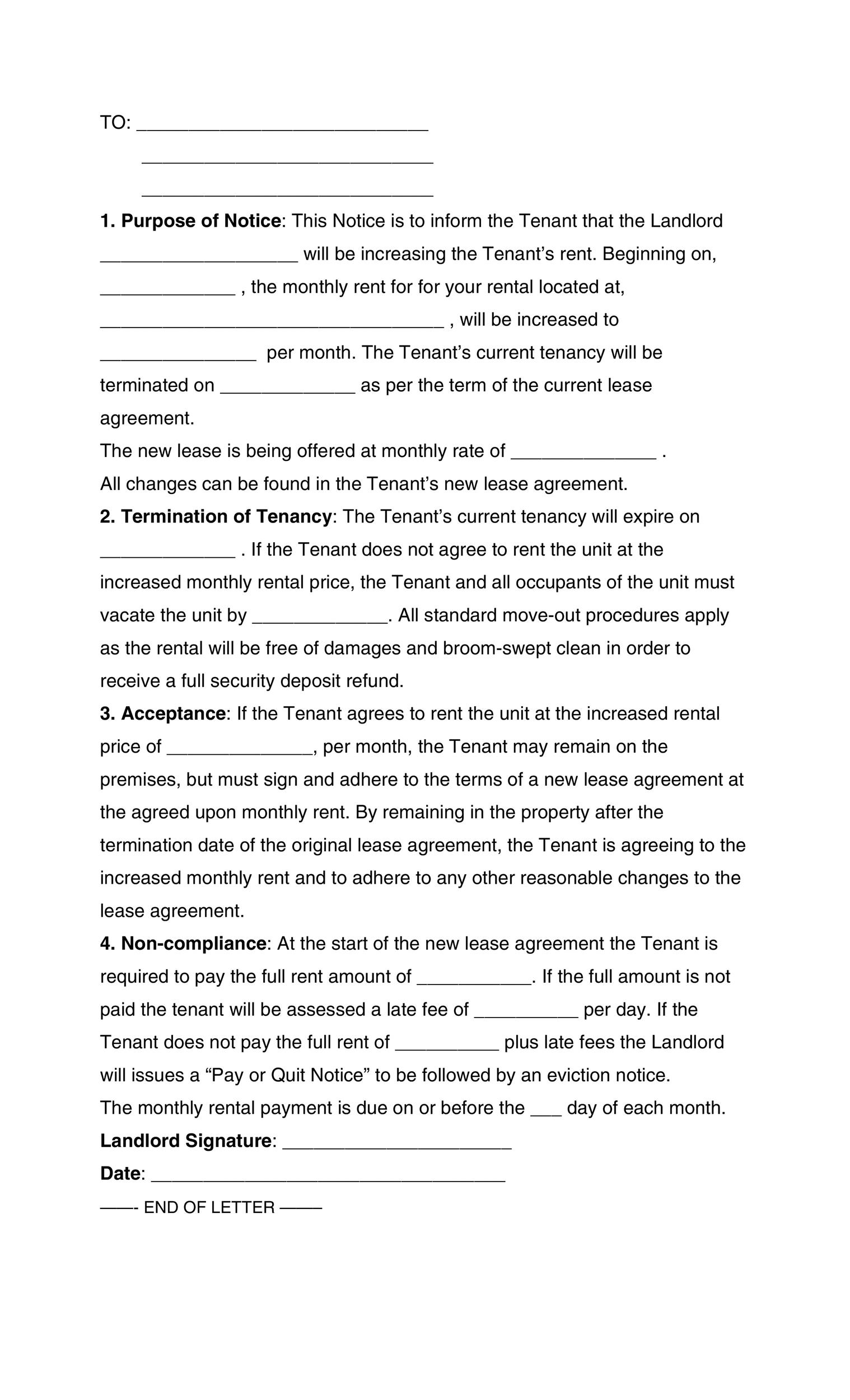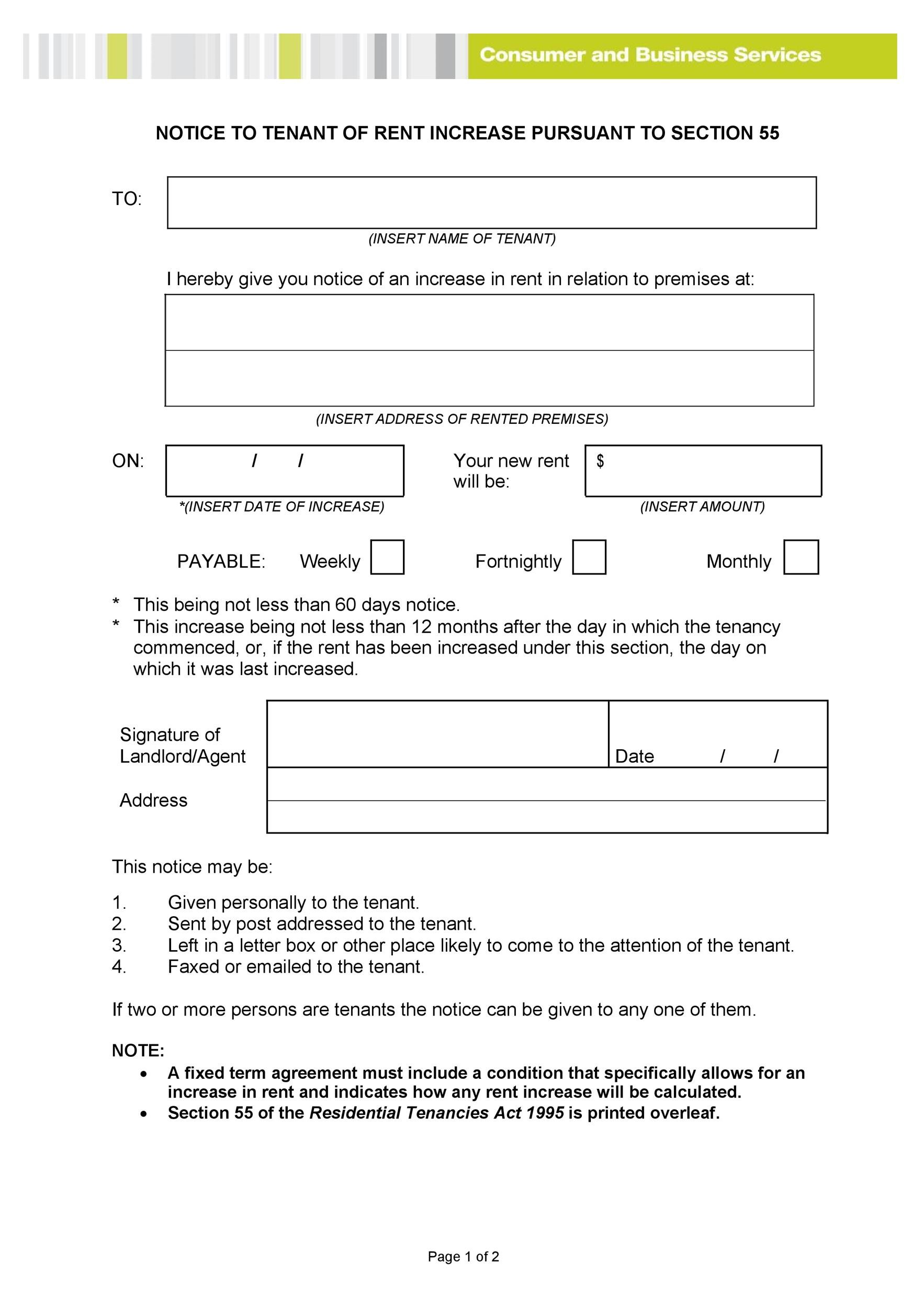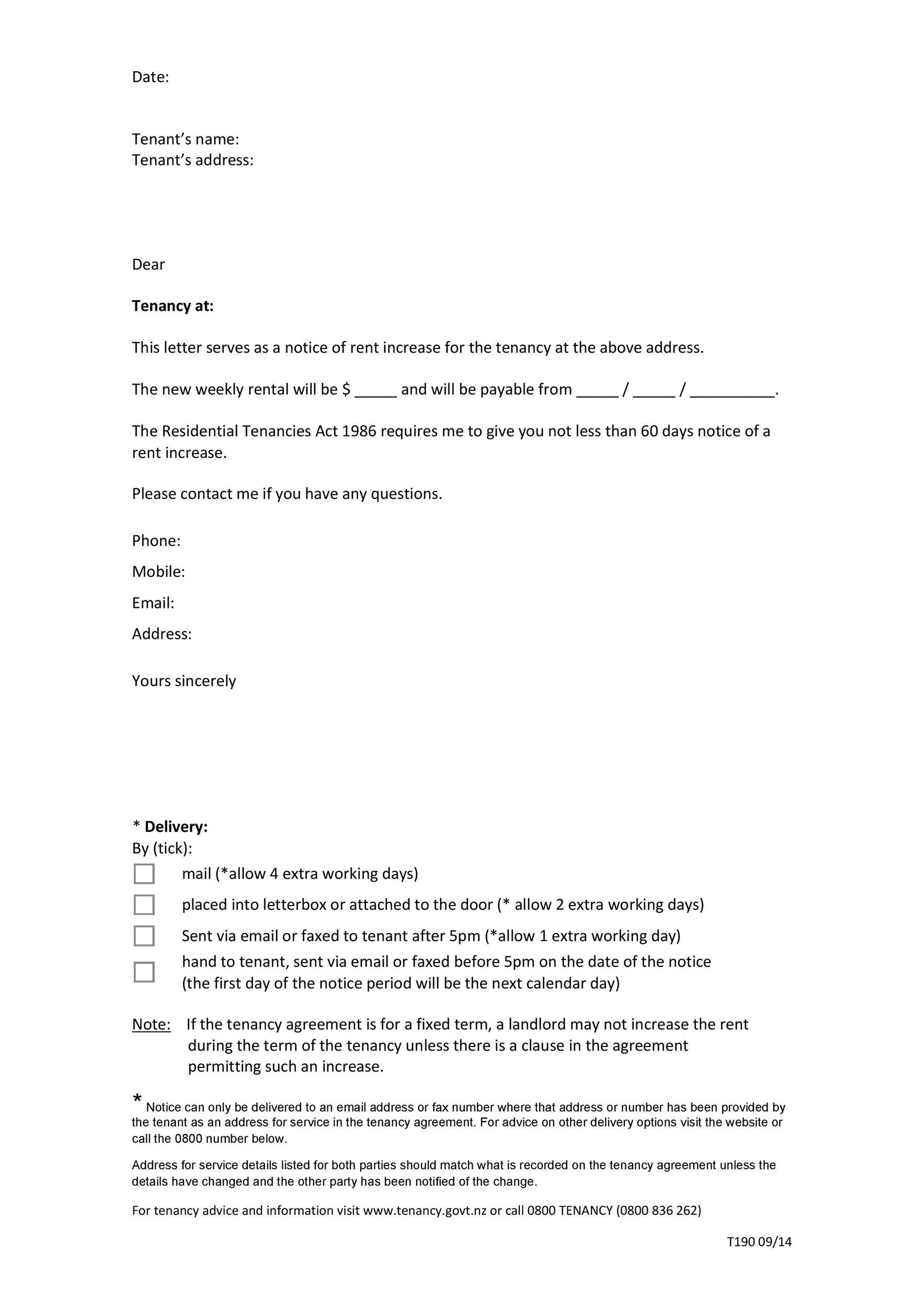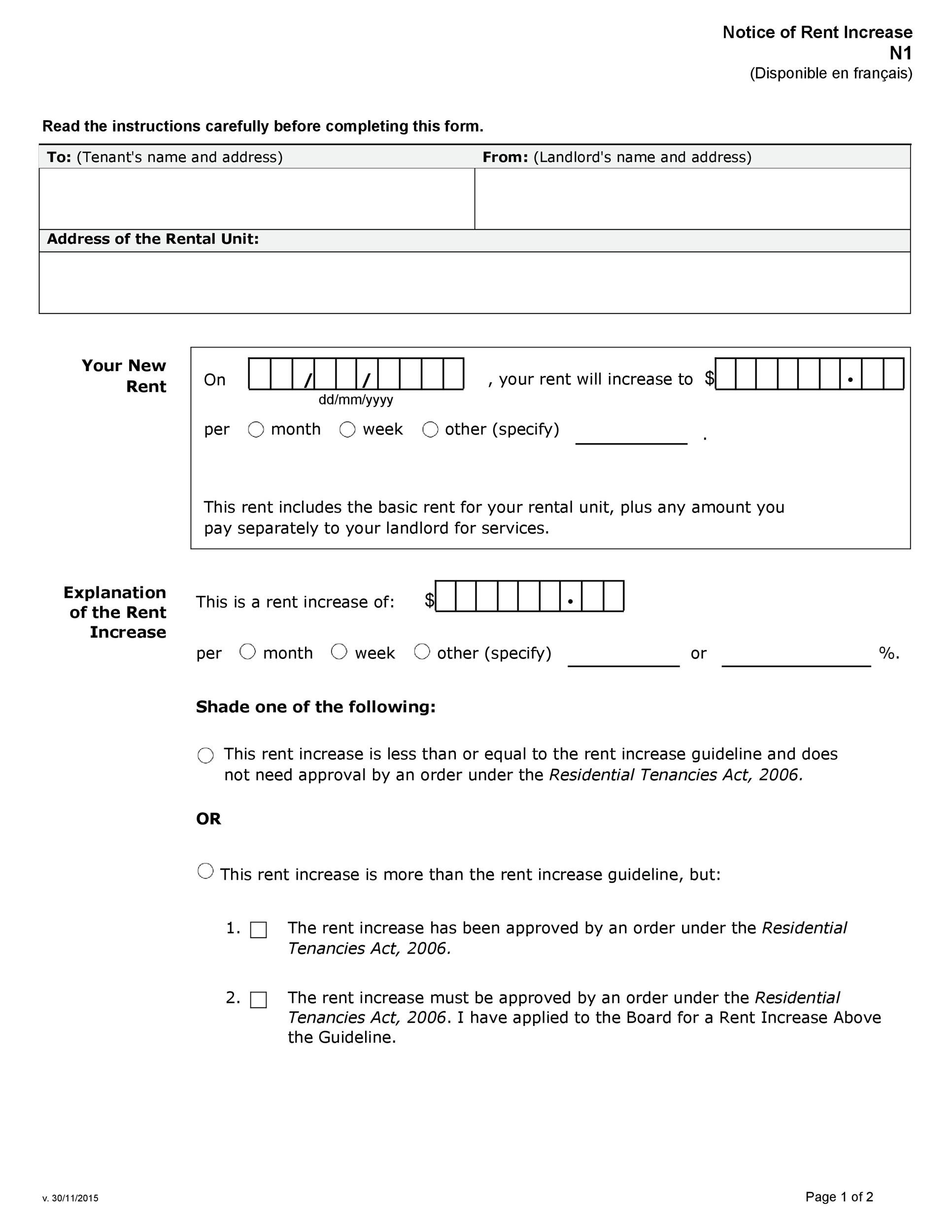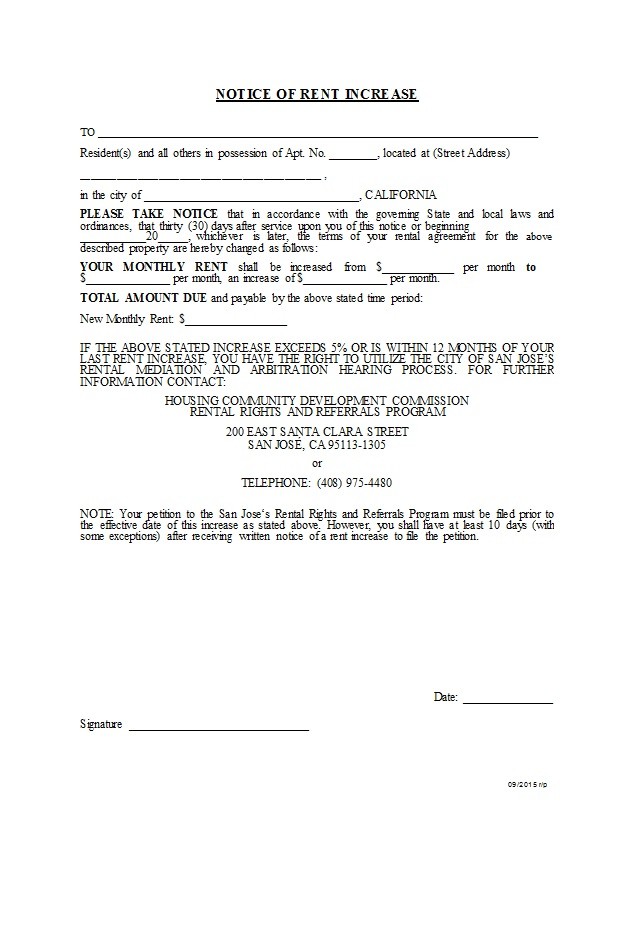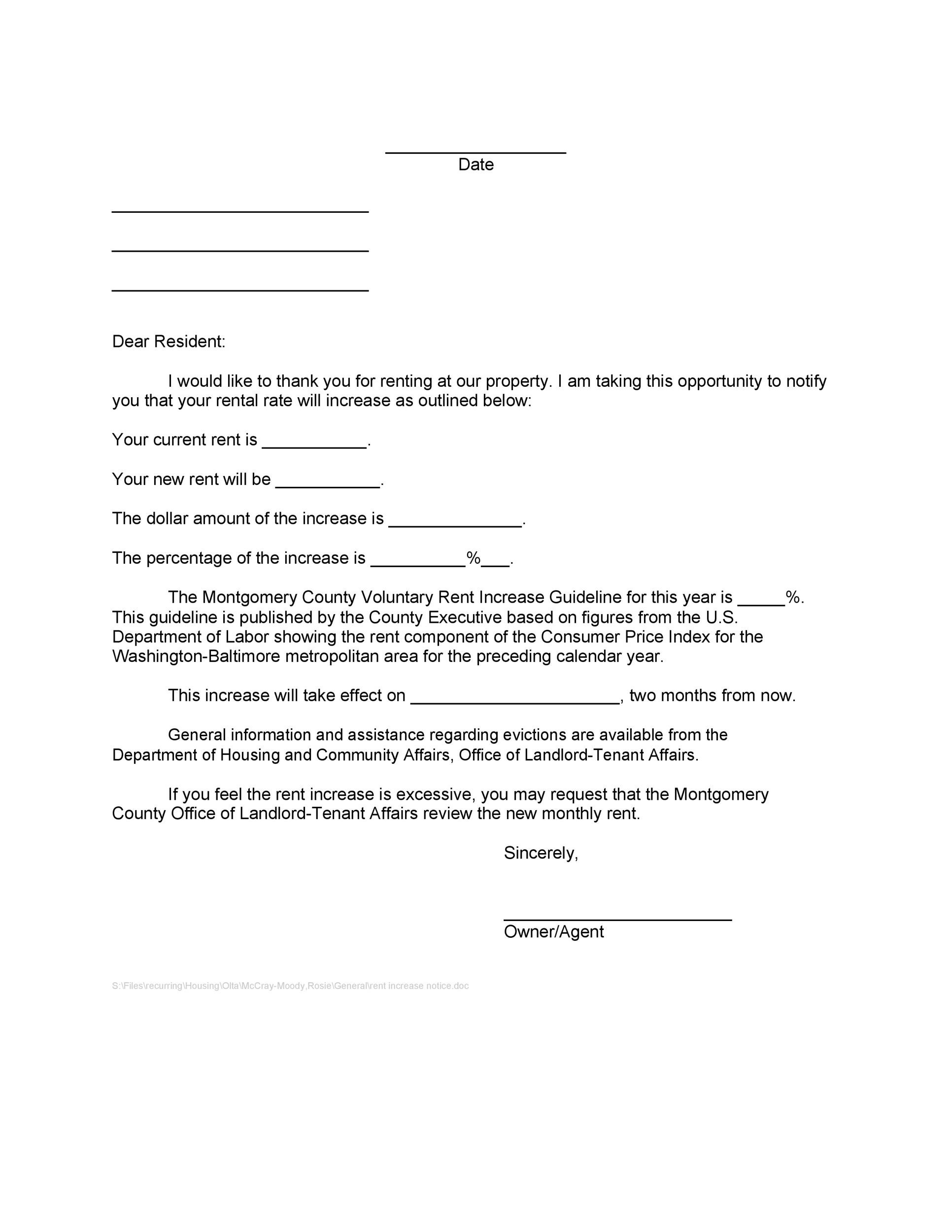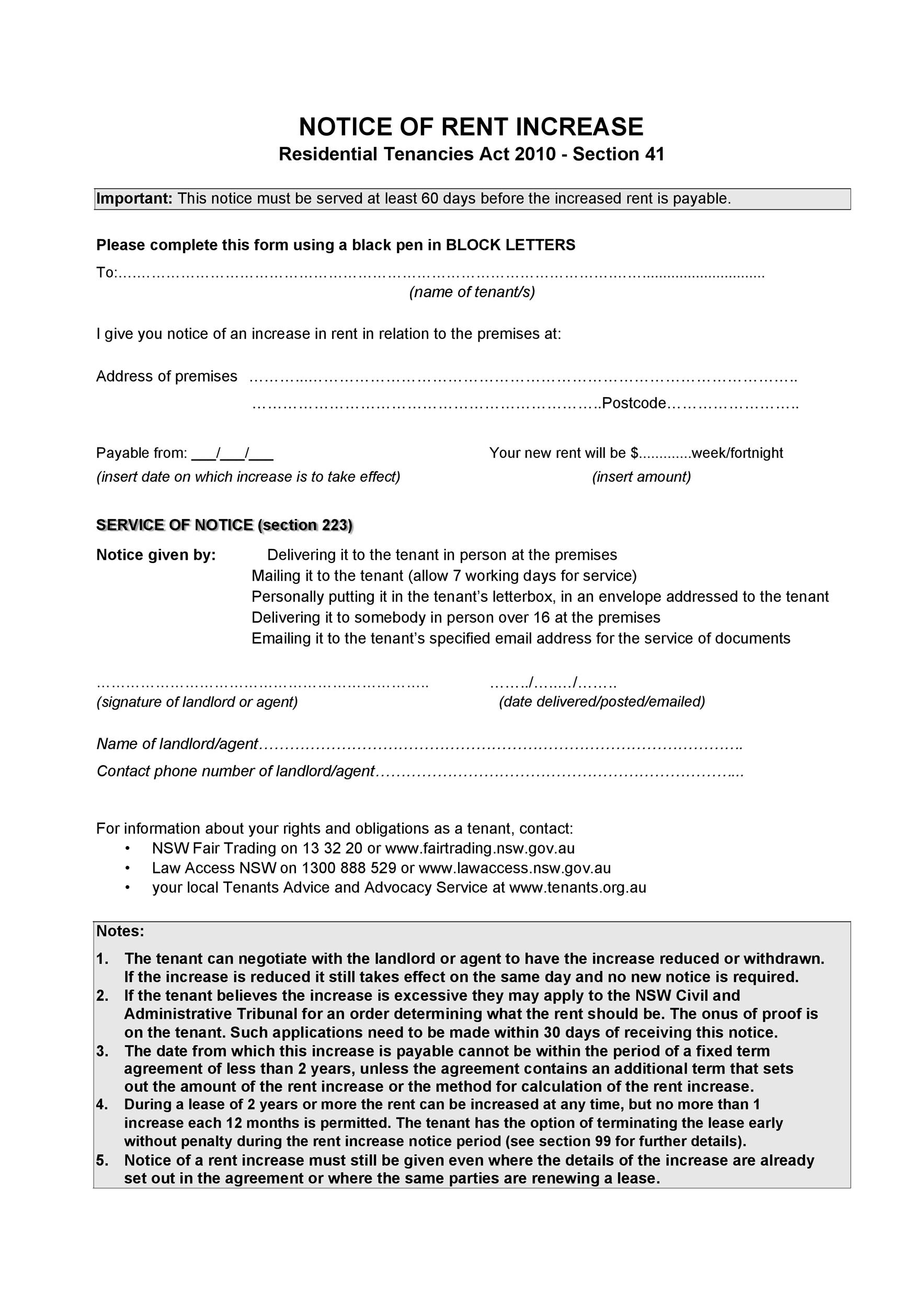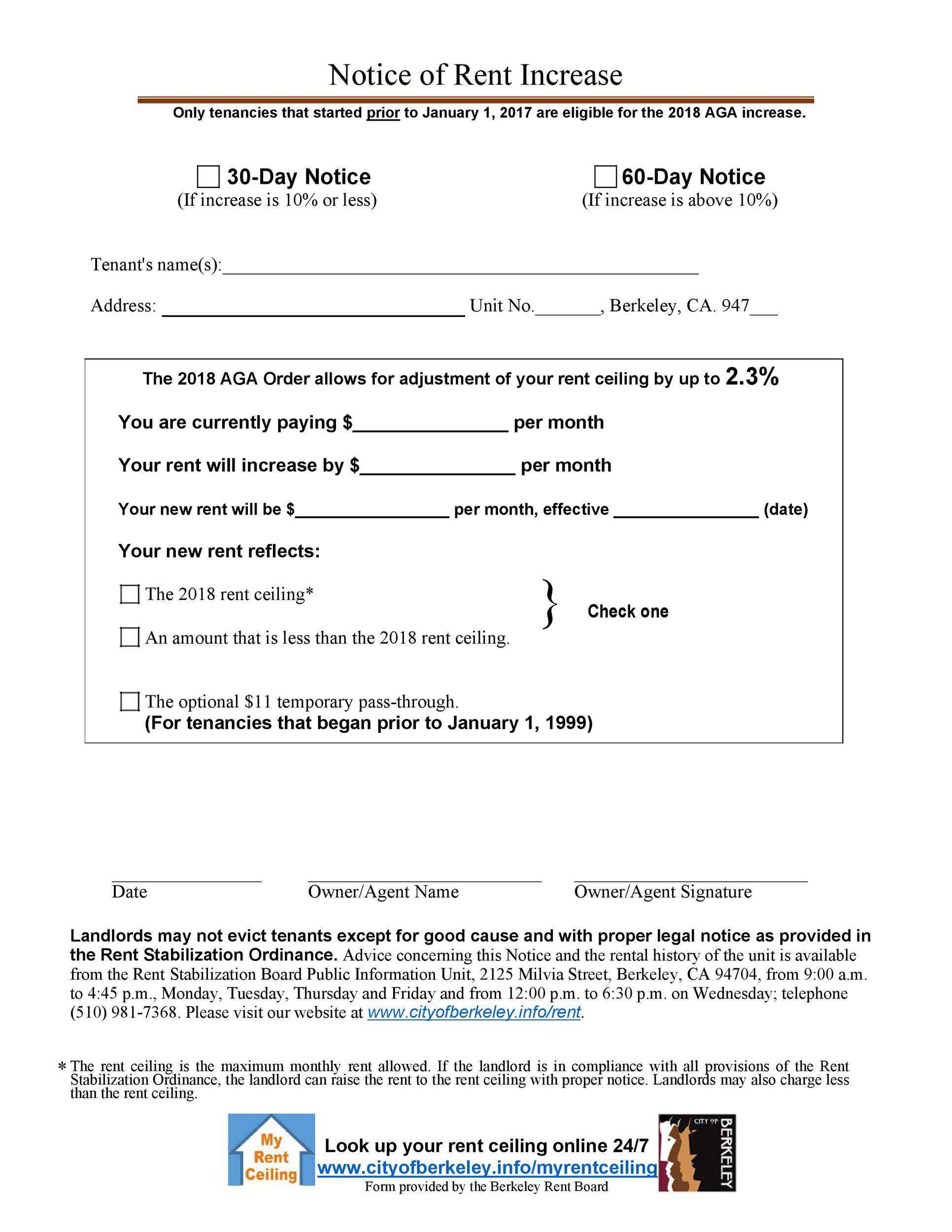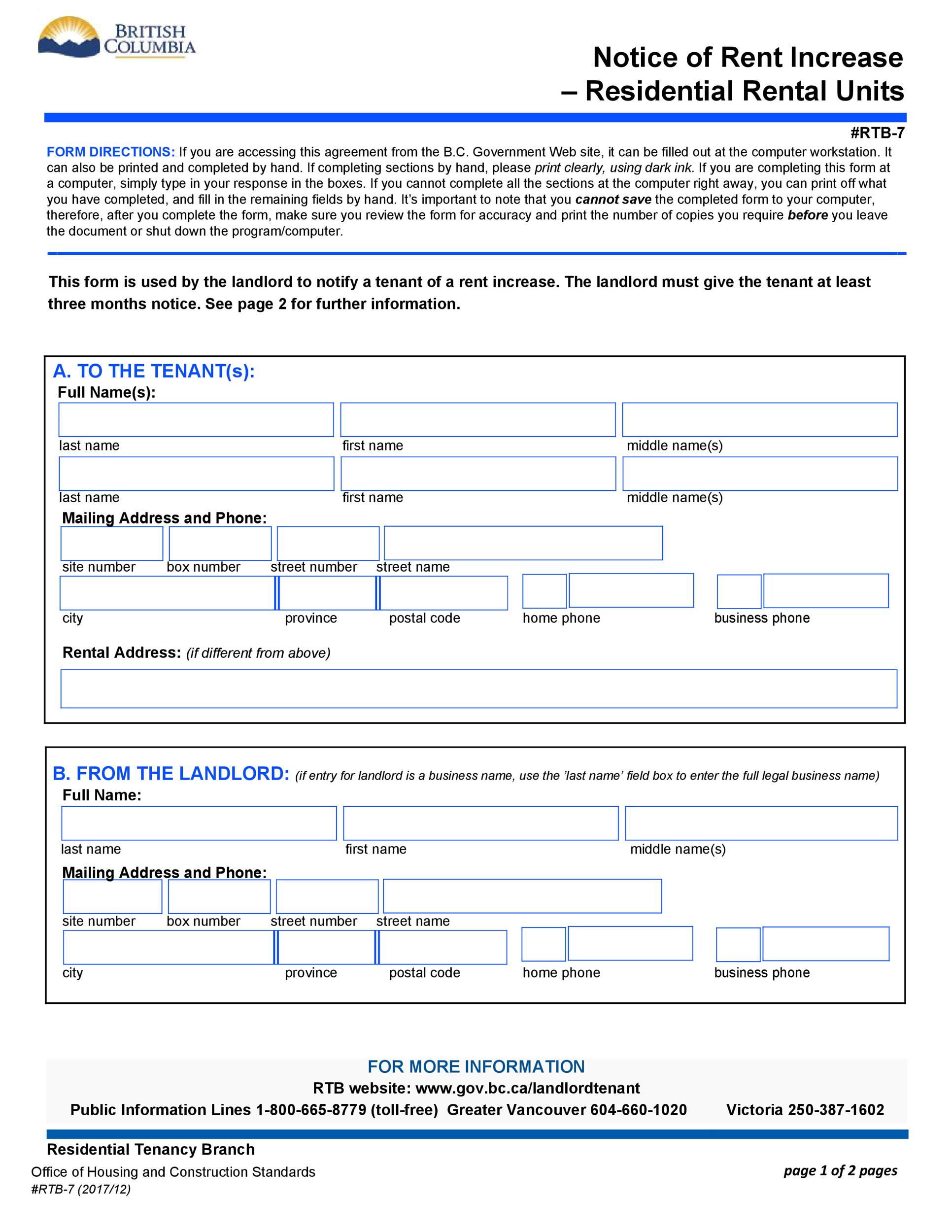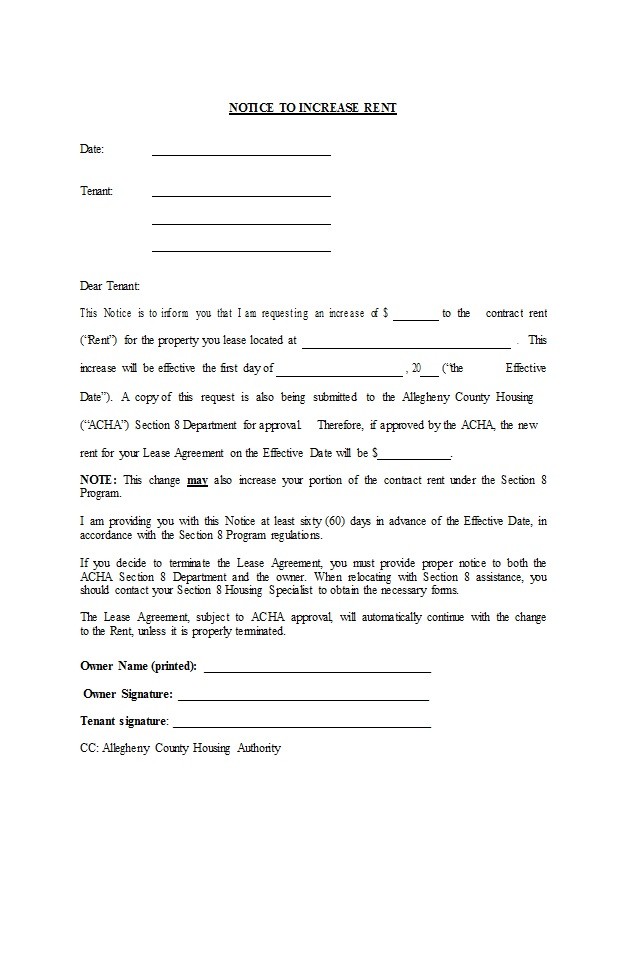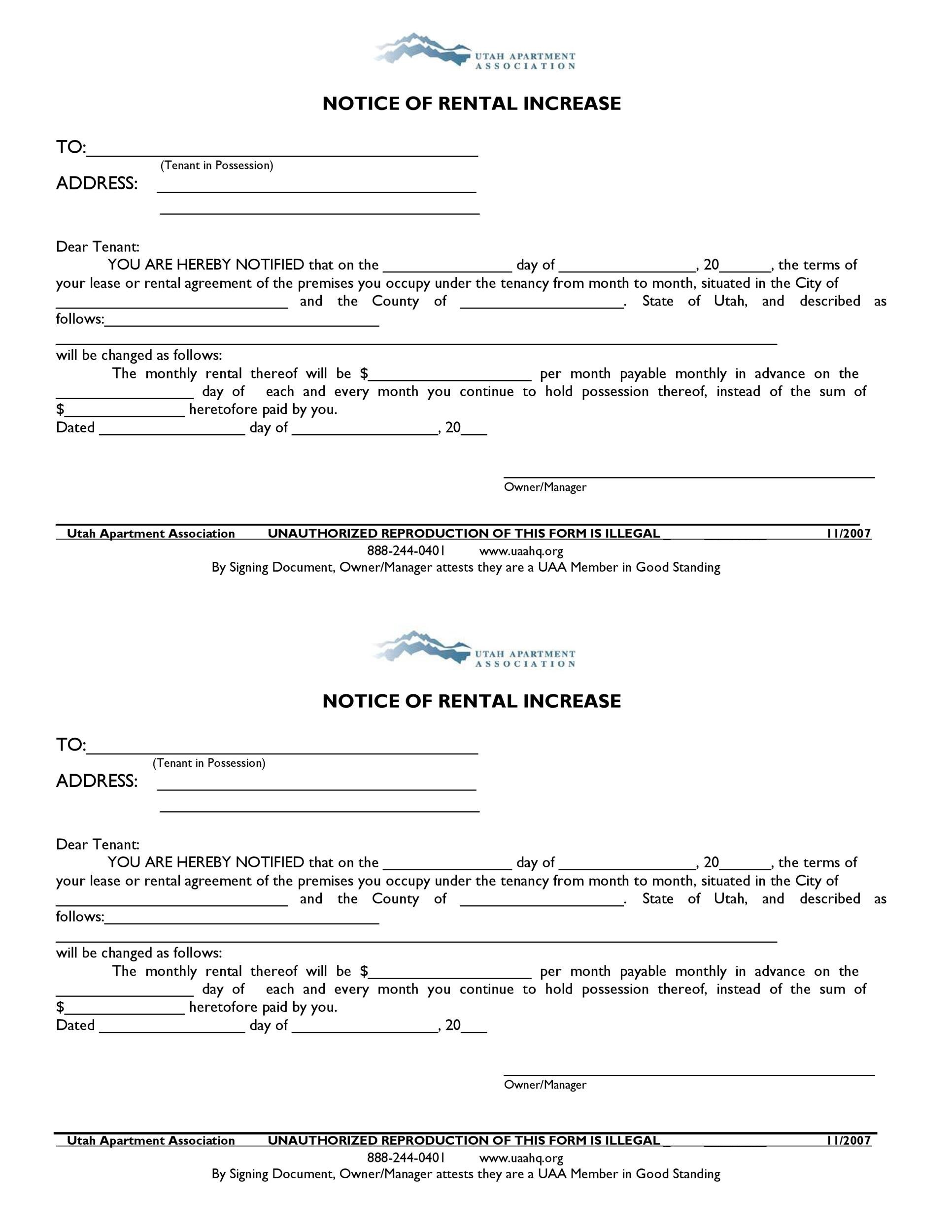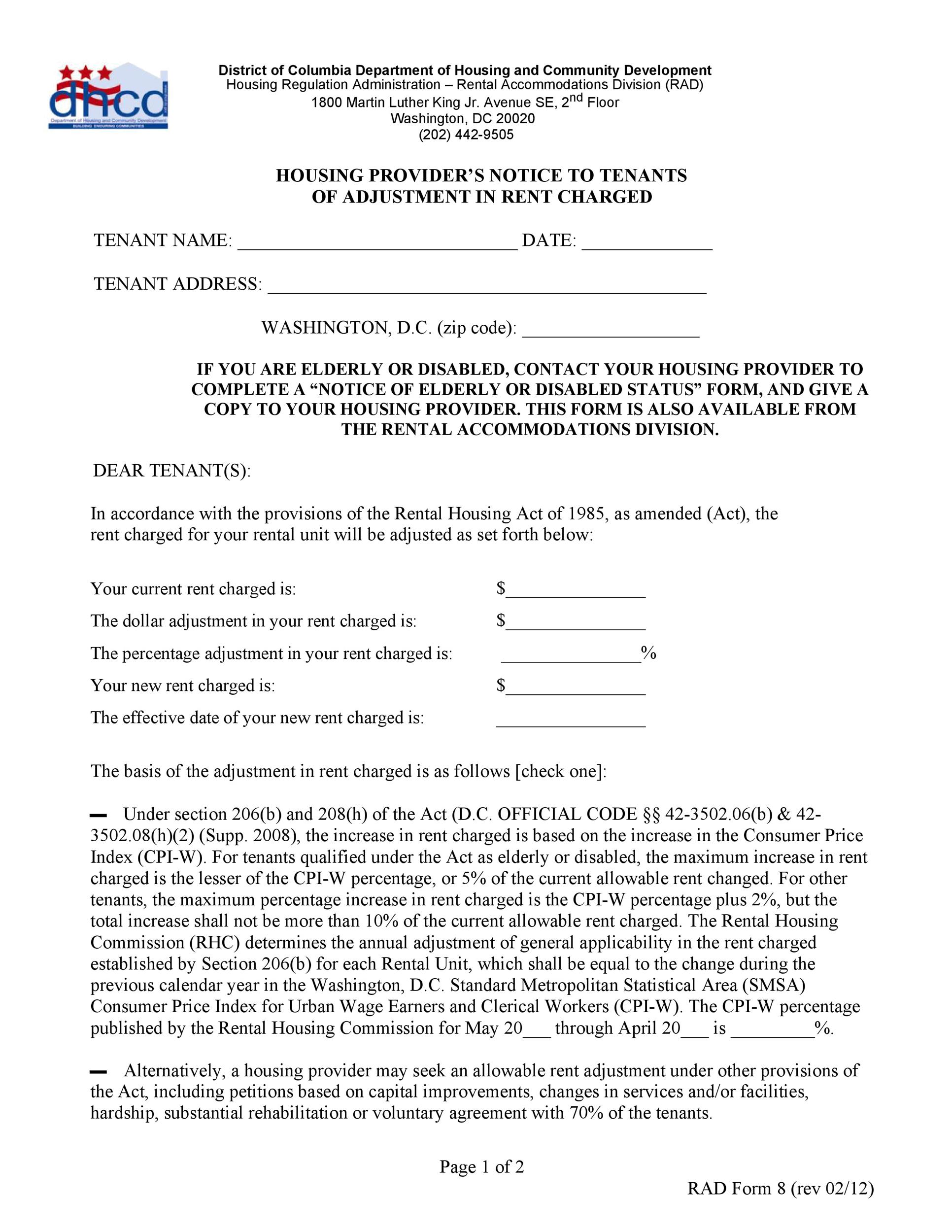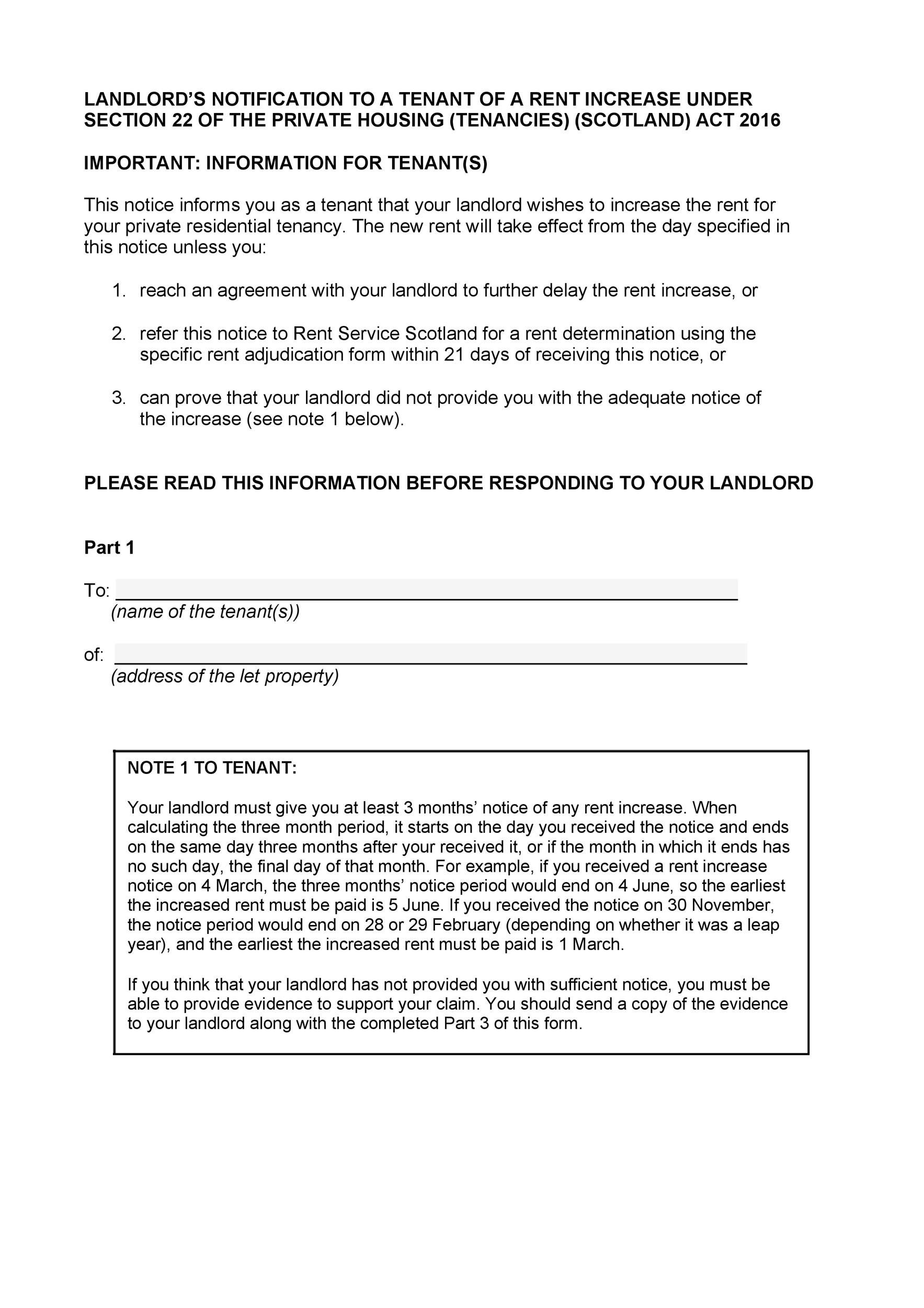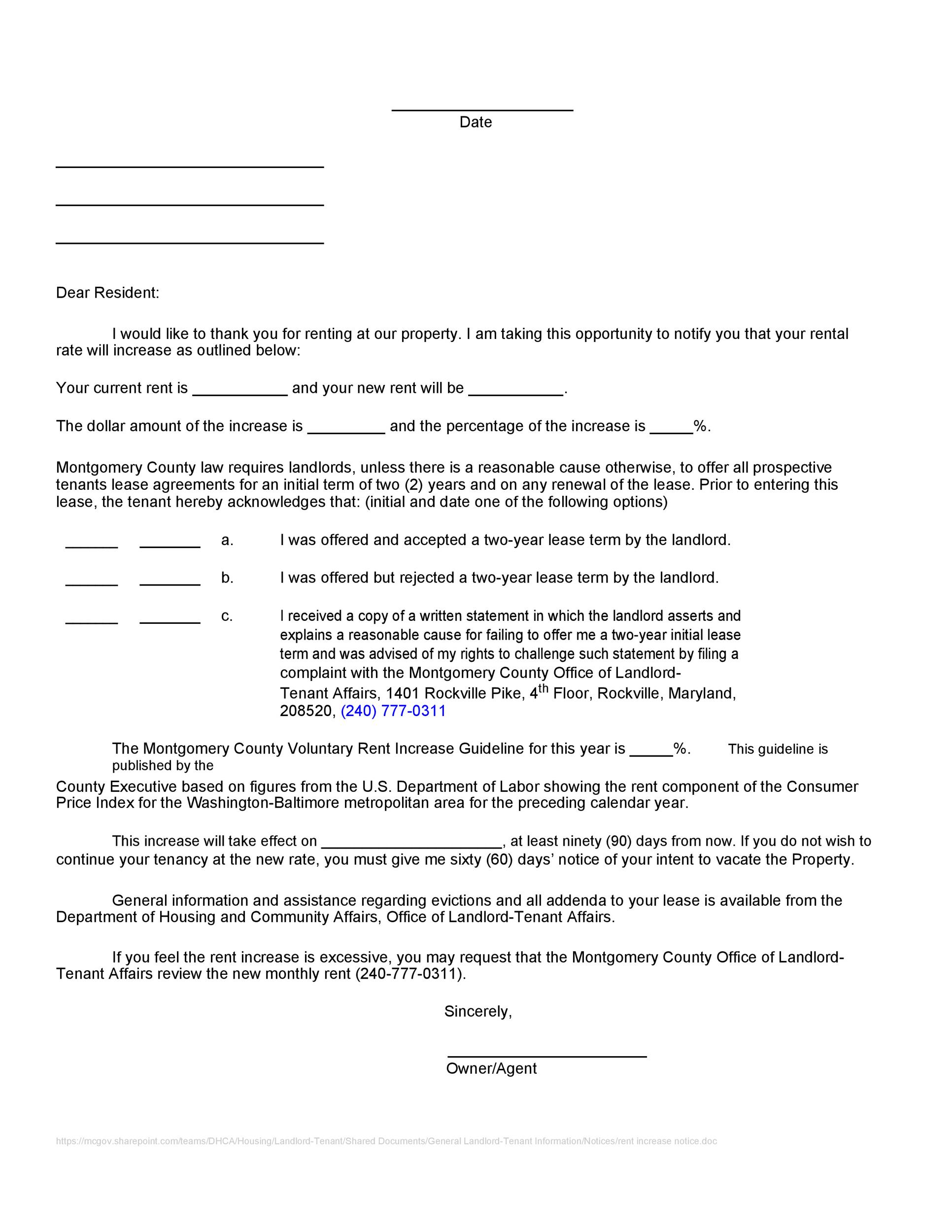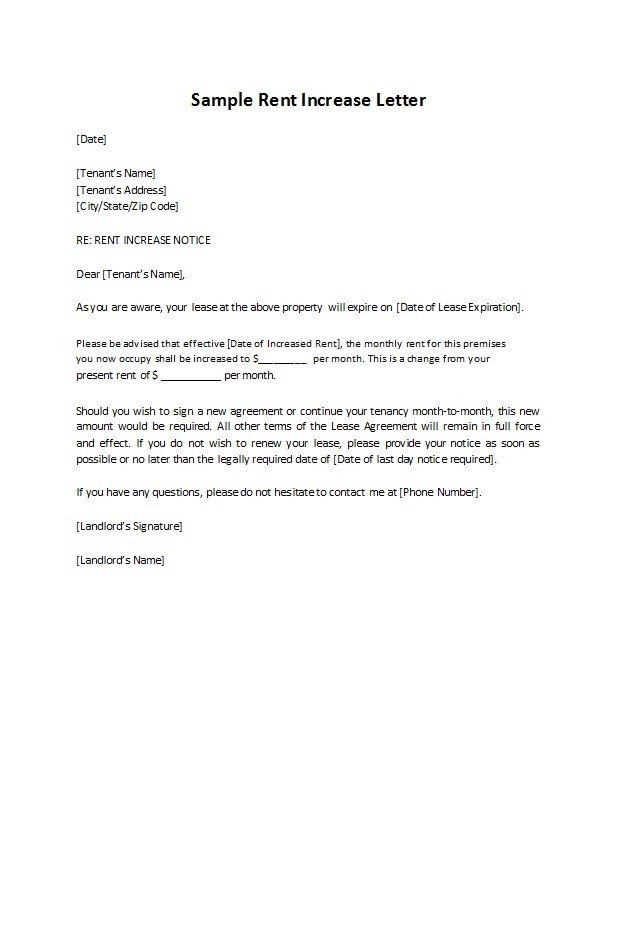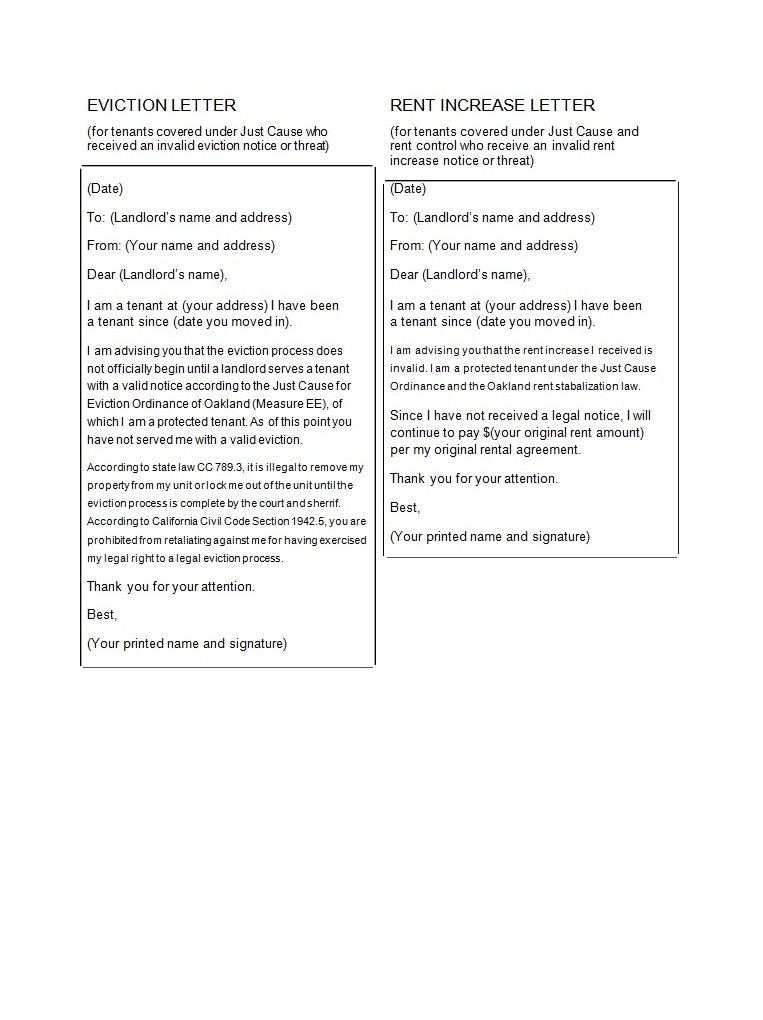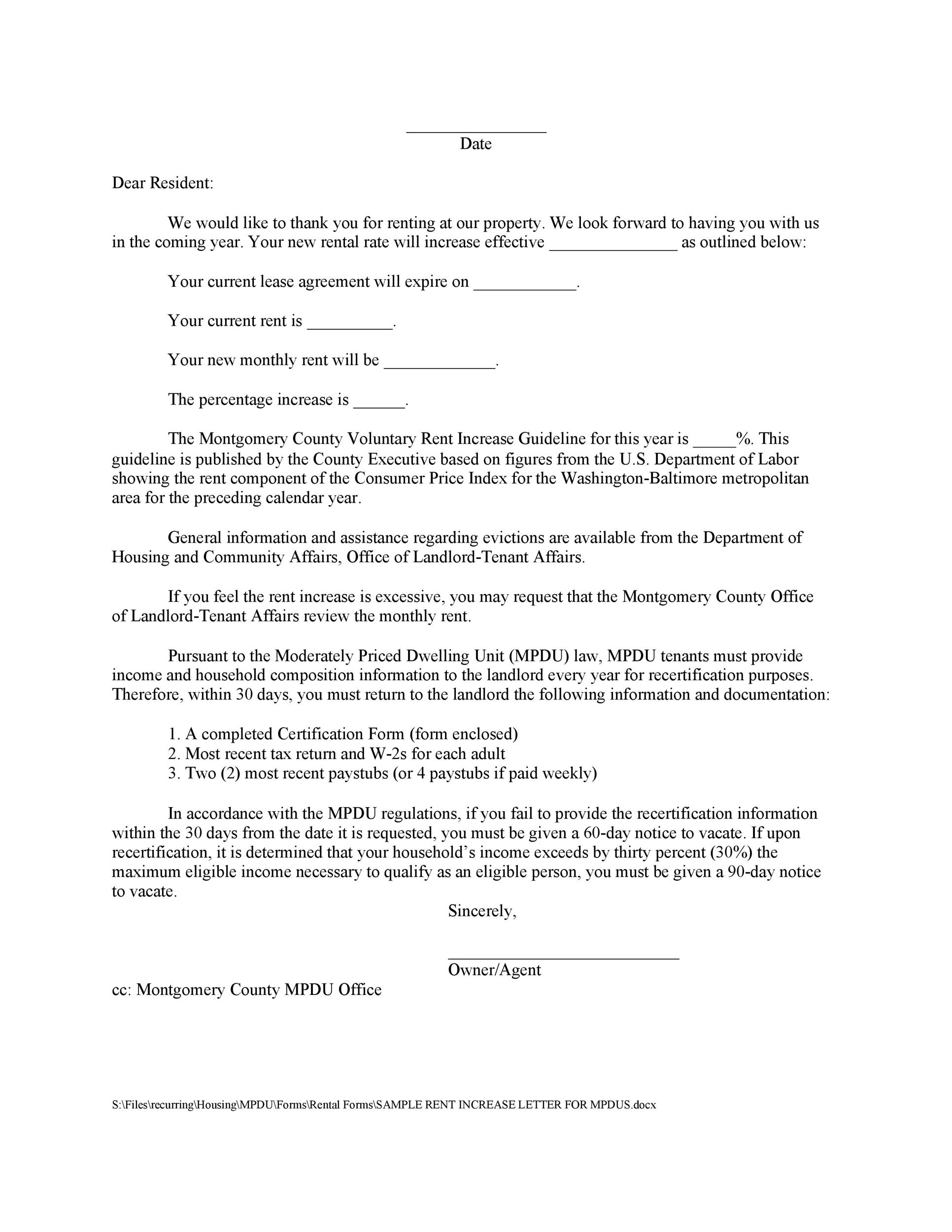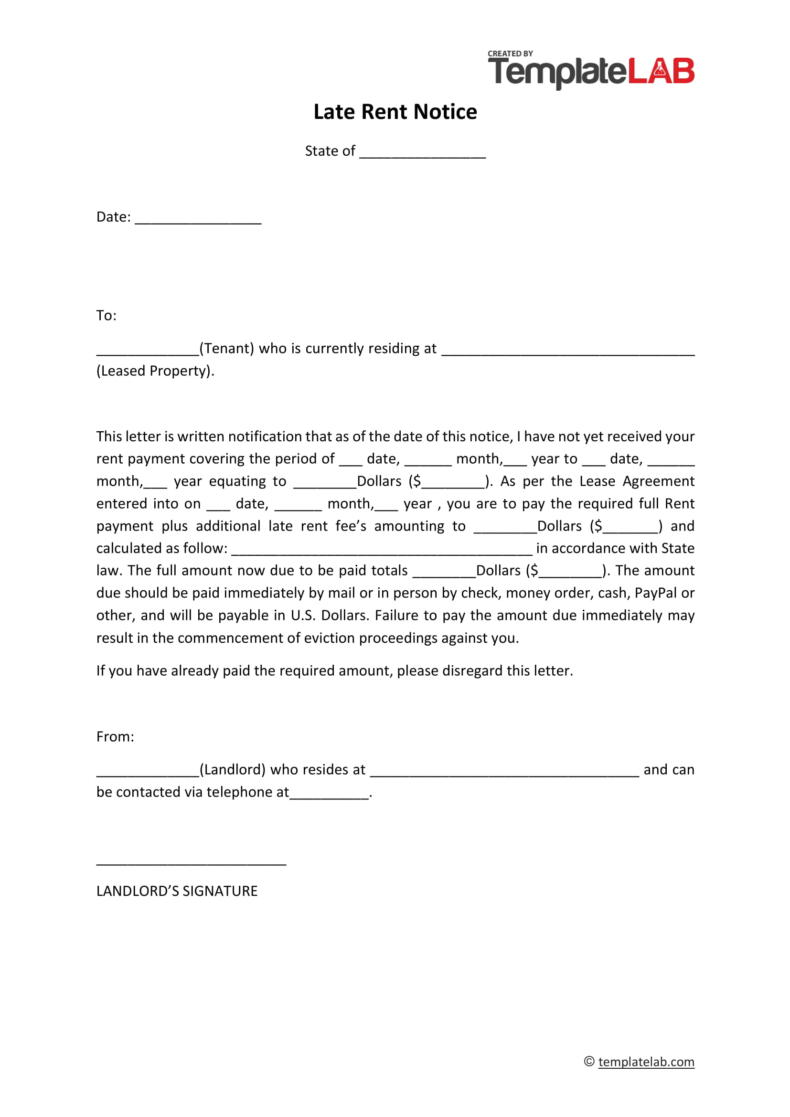Rent increases can be a source of stress for both tenants and landlords. The rising cost of living can lead to the need to send out a rent increase letter to tenants that live in your rental properties. A rent increase letter is rarely welcomed by people living on your rental properties, and you might be worried about the right ways to create this letter to reduce the strife and concerns that might happen due to its arrival. If you are worried that your rent increase notice will cause your tenants to move out or sue you, you need to be sure that you are writing it correctly.
Table of Contents
- 1 Rent Increase Letters
- 2 What is a notice of rent increase?
- 3 What items are included in a rent increase letter?
- 4 Rent Increase Notices
- 5 When do you need to send out a rent increase letter?
- 6 Rental Increase Forms
- 7 How to write a letter of rent increase
- 8 Friendly Rent Increase Letters
- 9 What is the most a landlord can raise the rent?
Writing a rent increase letter properly will reduce the chance that some kind of strife can crop up between you and your renters. This kind of letter can also make sure that your renters do not feel surprised or blindsided when their rent increase letter arrives. You can handle a large part of the notification process related to a rent change just through this letter when it has been written correctly.
Rent Increase Letters
By State
What is a notice of rent increase?
A notice of rent increase is a common rental increase form that is used to notify tenants about a change to their monthly rent. This letter is delivered to give tenants the time to figure out if they can afford the proposed increase and to reach out if they are worried about not being able to remain in their lease due to the rising cost of living in the area of the rental. A friendly rent increase letter can go a long way toward making the process of interacting with tenants on this subject much more positive overall.
You will want to be sure that you know how to write this kind of letter to avoid conflict with your renters and to be sure that you have provided them with the right information that is needed to be prepared for the change to their rental contract that is upcoming. Sharp increases in rent are never a good idea, and you should expect that a rent increase notice will be much more welcome if it does not relay a steep increase in the cost of remaining in a lease with you or your rental company.
What items are included in a rent increase letter?
These letters need to give the tenant the right information so that they can be fully informed about the changes to come. You will need to be thorough in your description of the changes to the rental agreement and the cost of living on the property. This will prevent conflict with your tenants after the increase has happened.
- Premises
- Current rent
- New rent
- Effective date
- Tenant name
- Landlord name
These items are the bare minimum for you to include in your rent increase letter, and you will want to be sure that you do not leave any of them out when you are drafting your notice to your renters.
Rent Increase Notices
When do you need to send out a rent increase letter?
This letter needs to be submitted when there is an upcoming change to the rental agreement in question. You will not be able to send out this letter and then increase the rent the very next day. There are often guidelines per the city or the state that you will need to follow with regard to your rent increases.
Make sure also to check on these variables that might make your proposed rent increase unfair and unenforceable:
- State laws that prevent rent increases of a certain percentage of the original cost
- Limitations like rent caps in some counties or areas
- Language in the existing rental contract that prohibits this action from being taken
- Grandfathered in rents that were protected in contracts that you have taken on when you buy a property
These kinds of situations might make it impossible for you to increase the rent in your rental property’s area, or it might mean that you just cannot increase the rent until the existing tenant leaves the property. These kinds of rent caps and controls are more common in large cities where housing is often hard to come by, and rent costs can be prohibitive for many people.
Rental Increase Forms
How to write a letter of rent increase
There are various reasons that you might have to increase rent. You will probably be responding to an increase in property taxes or the cost of living in your renter’s area. You might also be trying to offset increased insurance premiums or an increase in care costs for the property. HOA fees can go up annually as well, which can drive up the cost of your rental property to own and maintain. Inflation is another big factor that causes rents to go up since your costs to care for and own the property will go up as inflation increases.
There are always situations where you cannot increase the rent, even by a small margin, such as in rent-controlled areas, and when you have not given proper notice. The more accurate your letter to notify of this change and the more thorough your research into the allowed rent increase processes, the better off you will be.
These are the things that need to be included in every rent increase notice that you send out to your tenants. Remember that some of the specifics might vary depending on your unique situation in your county or your state. Always check on the laws and limitations of the rent increase process in your area before sending out letters to tenants.
- Date. This is the date of the rent increase. Make sure that you are compliant with local laws about how much notice you must give your renters before you increase the rent. If you are not in compliance with these stated laws, you will not be able to enforce your rent increase.
- Tenant Contact Information. List the tenant’s full legal name and make sure that you list each tenant correctly if there is more than one person on the rental contract. Make sure that you indicate if they are leasing or renting, as these are often two different kinds of agreements that come with their own laws and limitations.
- Tenant Address. Indicate the address of the property that is being leased or rented in this section of the document. The address will need to be complete for the document to be considered valid.
- Details of the Rent. Include the details of the rental agreement as laid out in the original document that you and your renter signed. Indicate the date that the original contract was signed as well. This might include the payment dates and the kinds of payment methods that you accept, the nature of the agreement if there were any special circumstances involved, as well as the terms of the lease or the rental agreement. The title and name of the original document should be listed in this section, and you can even attach the original contract to your rent increase notice for further clarity. State the current rent amount and then indicate the amount that the rent will be after the change. Write the date of the rent increase in this section again. Put the new rent date in this section as well to be sure that there is no confusion about the date that the rent is due under the adjusted rental agreement with the new renting costs.
- Ask for Acknowledgement. Your tenant will need to sign and return the letter to indicate that they have agreed to the change in the rent amount and to indicate that they were notified. Do not send out the original document to the renter in case they choose to just shred it and erase the proof that you ever made the letter or sent it out to them. The acknowledgment can be an important factor if you are trying to be sure that your tenant cannot come back on you later saying that you did not warn them about this change to their rent and that they were not ready. You can also just send the rent increase letter by certified mail to be sure that you have gotten a confirmed receipt of the letter by the proposed increase. If the person is not accepting the mail, you can post the notice to their door to serve them with proper notification. This might not be allowed in all states, so you will need to verify that this method of notification is allowed in your county or your state.
- Contact Information for the Landlord. Make sure that your name and address, and phone number are on the document. You can also indicate the name and address, and phone number of your rental company if that is who the renter actually signed the agreement with. Consider adding your email as well if you want to help foster open communication with your renter about the topic.
Friendly Rent Increase Letters
What is the most a landlord can raise the rent?
In most places, there is no limit to the amount that a landlord can increase rent. You might not want to increase the rent dramatically, even if you are allowed to do so by law so that you can keep your tenants happy with you. Be sure that you look into any rent controls that are connected with the property or the county, and be sure as well that there is no rent increase legislation that is going to prevent you from increasing your rent as much as you wish.
The timing of a rent increase can be critical as well, and increasing rent near the holidays can be really hard on people, as can increasing rent when school is about to start. If you want to ruffle the least feathers, you will increase the rent gradually over time and not at a time of the year that will cause people to go into a financial panic. You will also want to be fair to your renters if you wish to keep them. The trust that can be broken through a rent increase can have lasting implications for your ability to keep your tenants happy when other changes might need to be made. You should also be aware that some tenants will retaliate and do damage and deface your property if they feel that they have been wronged. This can be very expensive, and you will want to avoid this outcome at all costs.

